Why we ran it: To discover how deploying the premium EV’s mighty acceleration dovetails with preserving its electric range
Month 4 - Month 3 - Month 2 - Month 1 - Prices and specs
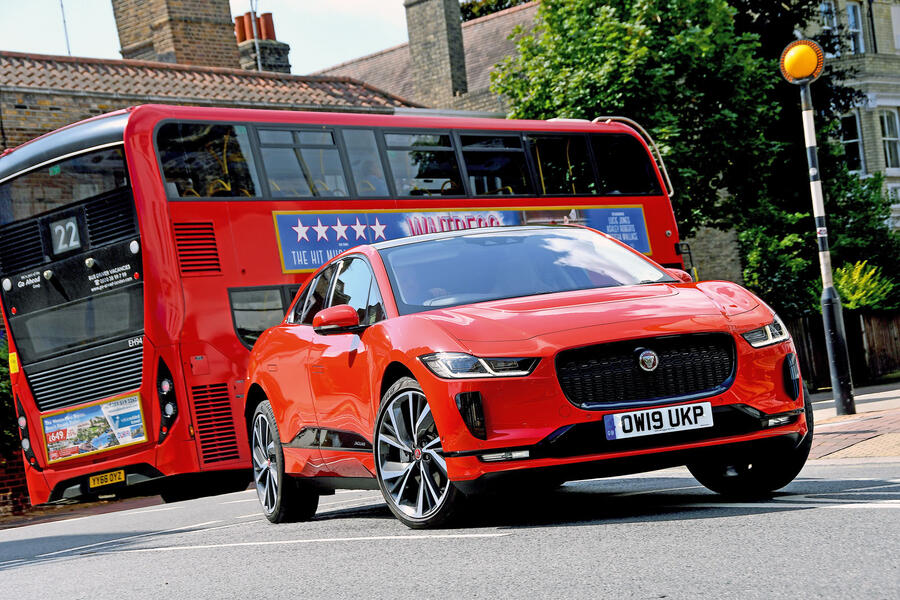
Life with a Jaguar I-Pace: Month 4
It’s mightily impressive on a typical test drive but how about an extended test comprising over 9000 everyday miles? - 15th January 2020
These ‘goodbye’ stories are nearly always tinged with regret, mainly because we rarely run cars as long-termers that haven’t already won our approval during earlier road testing. So when they leave, it’s not pleasant.
However, the regret we feel with the departure of our Jaguar I-Pace, after more than 9000 miles, is on another, higher level. It’s as if we’re parting company with not just a great car but a passport to the future of modern driving. Since joining us, this has been our most potent and prominent link with the electrified world rapidly coming our way, so sending our I-Pace off to a new owner feels like a major step back.
Which is not to pretend that running the battery-electric Jaguar has been plain sailing. We’ve encountered glitches – one or two with the car, the rest with ourselves. It’s clear that, although fundamentally reliable, at this point in electrification history cars like the I-Pace still need sympathetic owners prepared to understand and cope with their two main limitations: short range and a time-consuming refuelling process.
Jaguar promises a WLTP range of 258 miles for our version of the I-Pace, and after a recent software update, it’ll honestly deliver most of that in summer (25 miles less at this time of the year). That’s a decent performance for an SUV of its size (4.7m long) and weight (2.2 tonnes).
Everything works beautifully so long as you use the car for commuting and shortish journeys. If you’re back on your own drive in 30-80 miles, your car will need only a tickle, or nothing at all, to be ready for action the next day. Given the I-Pace’s superb driving characteristics (more later) and the fact that fuelling is one-third to one-fifth the cost of petrol or diesel, it’s hard to think of a better car for your fairly short-haul purpose.
But Autocar’s I-Pace has often been used for longer journeys, usually against the clock. In such situations, there’s almost never time for a charging session on the way to a destination (so often 100 miles away), which means you need either an extended period of careful driving to get home in a near-empty state of charge, or a 20-40min rapid charge on the return leg. Either is easy in theory but both require time and planning. And when you’ve had a life of carefree petrol/diesel refuelling, it’s hard to tell yourself this is progress. Some will say I’m making a meal of it, but my stern warning is that even when your electric car is as good as this I-Pace, wise potential customers will check its capabilities against their real-world requirements before buying.
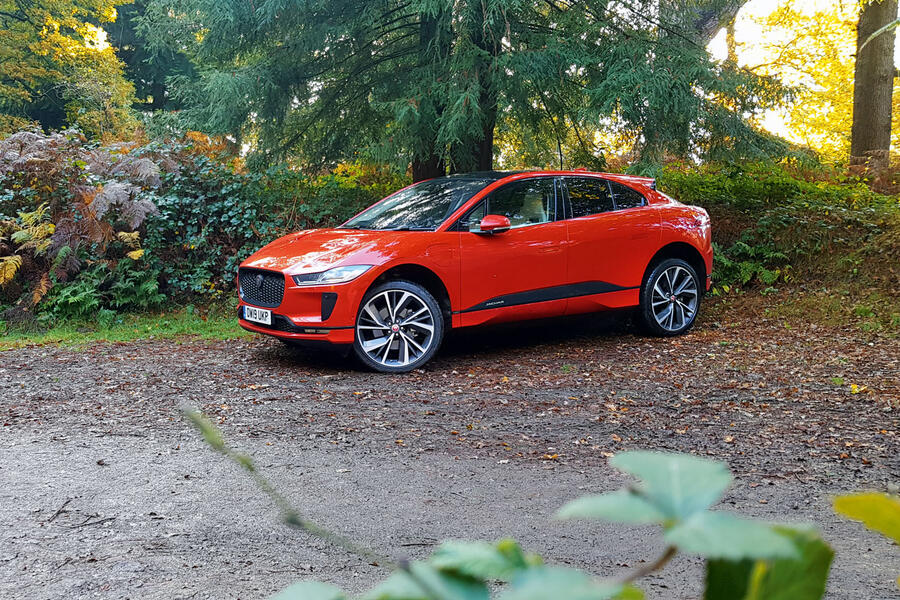
Now for those glorious driving factors: there is nothing in the affordable petrol world to match the clean, easy off-the-line response of a really great electric car like the I-Pace, which is driven at each end by a separate electric motor to provide superb traction in the worst weather. The precision is breathtaking, and so is the speed and accuracy of response to your commands.
You have to try it to believe it, and when you do, you’ll also discover that deceleration is just as powerful and precise. There’s almost no noise or vibration; you suddenly feel pity for those people still stuck in the it-has-to-be-noisy world. Engine notes can be great, but this kind of refinement is every bit as inspirational, especially when the car to which it is attached can deliver a 4.5sec 0-60mph sprint in total serenity.
While averaging nearly 1800 miles every month, we have never tired of the I-Pace’s flat, quiet, semi-sporting ride, although we have wondered if it’d be even better riding on 20in wheels and tyres rather than eye-grabbing 22s. But the body control and bump absorption are still great.
The long wheelbase delivers a beautiful feeling of directional stability but it also affects the car’s manoeuvring. (Turning circle is far from being the I-Pace’s strongest suit.) Talking of steering, we always enjoyed its firmness and accuracy and the wheel was delicious to use because it was covered with optional suede cloth. We’d have to pay the £600 option price, even though it would seem like highway robbery. On every journey, the driving made our I-Pace special and memorable.
The firmly bolstered seats, that suedecloth wheel, the smoothness, the accuracy of power deployment, the operational simplicity, the sheer extent of the performance – they all took the I-Pace away from any other Jag. Indeed, from any other car.
Glitches? Only one, really. At one stage, we simply couldn’t lock our car. We turned everything off and on again, left the car to stew for a while, pressed the remote buttons in all kinds of oddball sequences and consulted the handbook quite a bit, but nothing worked. Luckily, that moment came within a day or two of our car’s software upgrade and the problem never occurred again.
It’s well over a year since the I-Pace appeared and started winning plaudits. It still wins them. The only car threatening its ‘electric driver’s car’ mantle is the Porsche Taycan, and that’s a very high-level battle. Our time with the Jag teaches us one thing above the rest: the best electric car can be inspirational to drive so long as your needs suit its capabilities. Choose your I-Pace advisedly and you’ll find that you’re driving one of the world’s greatest modern cars. If you don’t, you won’t.
Second Opinion
What’s not to like about the I-Pace? It’s so progressive and effective that it feels like a blueprint for Jaguar’s future. I’d change very little: it’s unnecessarily wide and, as the wheels are so big and with that long wheelbase, the turning circle is poor. To follow it, Jag, just make a smaller one…
Mark Tisshaw
Love it:
Superb controls Smooth, abundant power, top-class traction and precise engine braking put it in a league of one for the price.
Brilliant chassis Excellent weight distribution, low centre of gravity and wide tyres give superb grip and neutral handling.
Great styling Hard to believe it is billed as an SUV, so graceful is the styling. It benefits from a taller driving position, though.
Spacious interior Elegant styling belies cabin space, especially in the rear. High boot deck also leaves large luggage space.
Loathe it:
Manoeuvrability Long wheelbase limits the I-Pace’s turning circle, especially noticeable in close town manoeuvring.
Final mileage: 9657
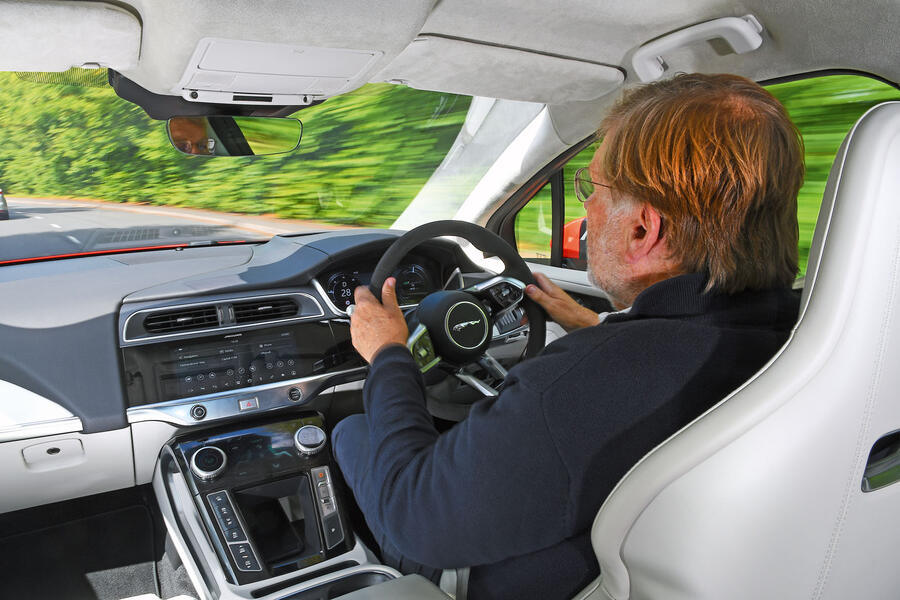
Pick any colour you like - they all stand out - 8th January 2020
Odd-looking bloke on the pavement kept gesticulating to me while I waited at a stop light. I rolled the window down and he stuck his head in. “Red or orange?” he asked. To many, this might seem a question without context, but I was used to it. He was asking about our electric Jag’s ‘sudden’ paint colour. It’s officially called Photon Red and many people love it. Me too.
Mileage: 8784
We’d say our I-Pace is as good as when it left the factory but that’s not true. It’s better - 24th December 2019
Fascinating to watch how our Jaguar I-Pace, which has been with us for 8200 miles and four months, has been improving gently as a motoring proposition. How? Well, for one thing, since it arrived, we’ve had chances to test the electric Jag against all recent comers – and found it still beats them all. Only Porsche’s Taycan looks a serious threat and that’s both pricier and not yet on sale.
To reinforce the I-Pace’s position, Jaguar has just launched a suite of software updates that produce tangible improvements everywhere, as Mark Tisshaw reported earlier. We’ve found out more since: saving energy in Eco mode; closing the active radiator vanes more often to reduce aero drag; allowing a bigger percentage of low-end battery capacity to be used for propulsion; boosting the energy harvested from regenerative braking; and increasing the accuracy of the range calculator.
To get these improvements, existing owners must do what we did – go back to the dealer – but the good news is that the changes will help cars accept future improvements ‘over the air’. Mind you, as I hear it, electric car manufacturers will remain reluctant to make SOTA (send over the air) changes that affect dynamic performance, in case of electronic crashes during installation. But it all makes sense and I regard the fact that Jaguar can – and is willing – to keep improving our car as a gigantic plus.
Since our I-Pace received these updates, we’ve had time to gauge what they mean in practical terms. Two effects stand out. First, the car seems to have a simple improvement of 25-30 miles in range offered. As winter bites, the figure is around 230 miles after a full recharge (although we’re learning to hold back on full charges unless really needed to preserve the battery). Second, the predicted range numbers now seem gently optimistic. If you start at 230 and you drive normally, by the time your odometer reads 150 miles, you’ll find that you’re offered 90-100 miles more. That’s a bonus 10-20 miles.
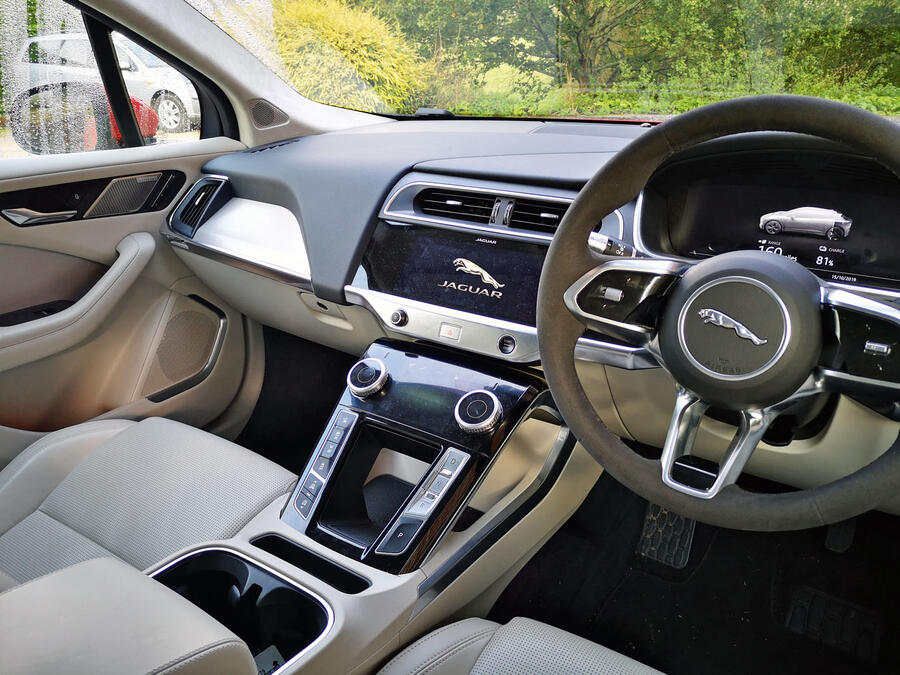
Mind you, we’ve never come close to Jaguar’s promised ‘up to’ range of 292 miles and won’t do for a few months, given the weather. Still, 250 now seems realistic, and given the car’s size and performance, that strikes us as very decent. All that guff electric car makers used to give us (as an excuse for saving cost and weight on big batteries) about average usage being 25 miles a day seems to have made no difference to electric car buyers’ preferences. Range sells.
The enhanced range of our car has been especially appreciated by me because of the difference it makes to my typical journeys. My most regular trips are from Twickenham to the Cotswolds (90-100 miles) and Twickenham to Coventry (110 miles). I can now do whole return journeys.
Apart from the natural suitability of an electric powertrain to Jaguar’s traditional dynamic values, one big lesson from the I-Pace has been a realisation (among all Autocar users) that you still need to prepare well for electric car journeys. You should know the location of charging points and how to operate differing types. I now know, for instance, that if I need extra charge on my return trip from Coventry, I can dive off the M40 to an inviting bank of rapid chargers in a massive new car park between Jaguar Land Rover’s Gaydon HQ and the adjacent British Motor Museum…
We’ve all realised that the best way to ‘get’ the I-Pace is to keep using it until the new operating procedure becomes second nature. You soon learn charging point etiquette and it’s my feeling that electric users are doing the same. They certainly seem to be better at moving promptly away from public chargers once finished, to make room for you. One rule stands out, for the I-Pace and anything else electric: never leave home base without a full charge and a plan. The lack of these essentials nearly always leads to needless delay. We’ve been there.
Love it:
Superb powertrain The smoothness and silence are great but the real big advantage is the amazing torque.
Loathe it:
Inherent bulk ‘Loathe’ is too strong but we’d definitely appreciate a smaller, more agile I-Pace.
Mileage: 8205
Air to breathe over bumps - 20th November 2019
No one who knows modern cars can quite believe the supple primary ride (given a ton’s worth of battery) or the silky secondary ride, given that the wheel diameter is so huge. What they’re not noticing — no-one does — is that the 255/40 Pirelli P Zero sidewalls are still quite deep. So despite it all, there’s plenty of air in the tyres, which is what you need.
Mileage: 7201
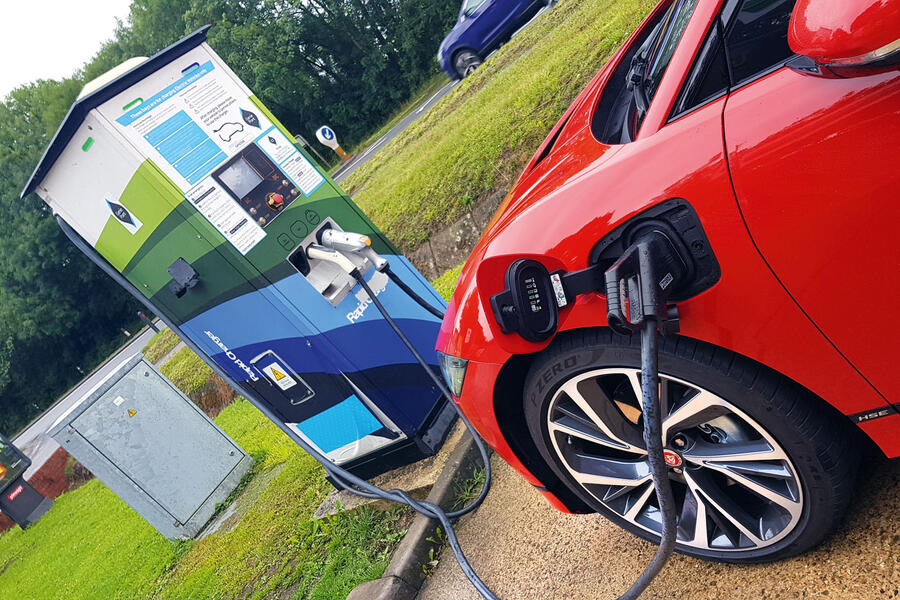
Need more miles of range? Then just go and download them - 13th November 2019
We’re used to software updates on our smartphones and computers, but they are now entering the car world, too. Our I-Pace has just had a software update that has made a colossal difference in one crucial area: battery range. Before it was showing 201 miles when you’d get in the car after a full charge, but now it shows 252.
That is like getting a 25% bigger fuel tank fitted to your car, and feels transformative in the way you can use it by getting rid of some of that latent range anxiety. The psychological difference between 200 and 250 miles is massive. I haven’t driven anywhere further than 200 miles in one hit this calendar year, so it would cover every single journey I’ve done, with range to spare. Before the update, the 201-mile figure felt like a true one; now, 252 miles feels conservative with more to be eked out.
So it proved on a full weekend of use in my care: I had my 60-mile round-trip commute to bookend the weekend, and in the middle did a return trip down the M4 to Heathrow and back, two day trips to places a good 20 miles from home, as well as a general weekend’s pottering, and still had 96 miles of range left when returning to the charging socket at our Twickenham HQ.
The software update could have been done remotely and over the air, but Jaguar would rather do anything involving the battery while in its care. In the unlikely event of something going wrong (a computer crashes or a connection is lost, for example), it’s easier to rectify at base than remotely.
The update also included the handy addition of Apple CarPlay, which has improved the I-Pace’s infotainment system no end. Jaguar Land Rover is off the pace with the speed, reliability and slickness of its infotainment system compared with the industry’s best, and so it has proved in the I-Pace as much as it did recently in our Range Rover Velar. While the I-Pace is now far better to operate using CarPlay, it’s still not perfect and simply failed to work on two of the journeys I did over the weekend. Luckily, the old ‘turn it off and turn it on again’ trick did the job.
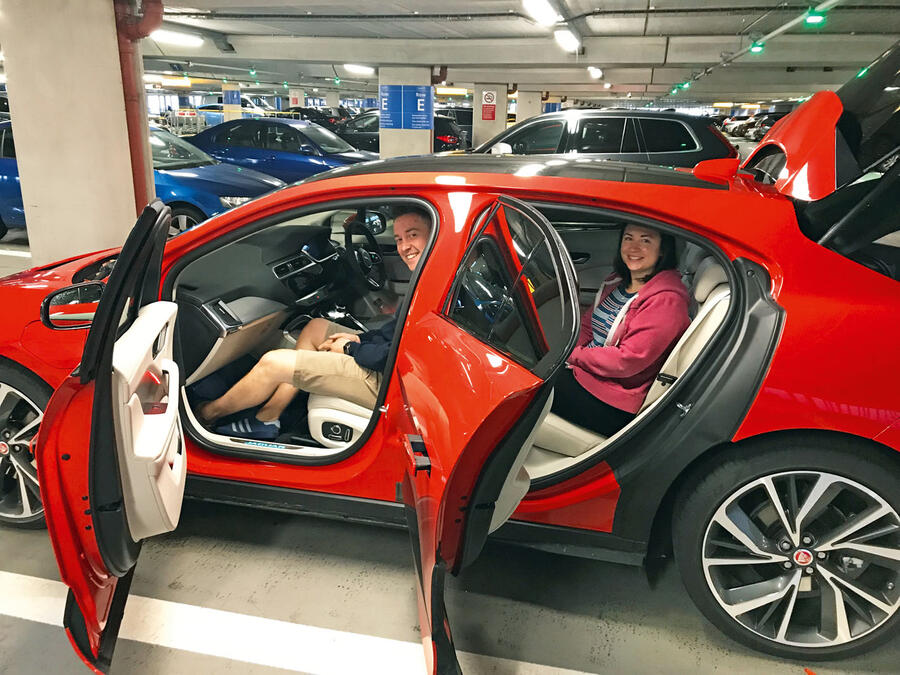
Of my weekend miles, the Heathrow trip was most notable as it introduced two of my friends to an electric car for the first time. Todd and Shona have little interest in cars beyond those that look nice, go well and won’t break down, but they were struck by just how radical the Jaguar looked.
While I struggled to answer questions on where people would charge electric cars if everyone bought one tomorrow and whether or not the prices would ever come down, Todd and Shona were still very impressed with how smooth and quiet the I-Pace was on their chauffeur-driven trip to the airport ahead of their holiday. They were also struck by its turn of pace and the spaciousness for both them and their luggage.
While it may not have convinced them fully on the merits of buying an EV – yet – both were surprised that this car was wearing a Jaguar badge in the first place given how radical the styling and propulsion system are. “Not the usual Jaguar you’d see down the golf club,” Todd noted. The I-Pace, then, is changing attitudes to Jaguar as much as it is to electric cars.
Mark Tisshaw
Love it:
Airy interior Hadn’t appreciated before just how bright and airy the I-Pace’s cabin is with light trim and a glass roof.
Loathe it:
Charging port location Having just one port on the nearside front corner really limits where and how you can park to charge it.
Mileage: 6722
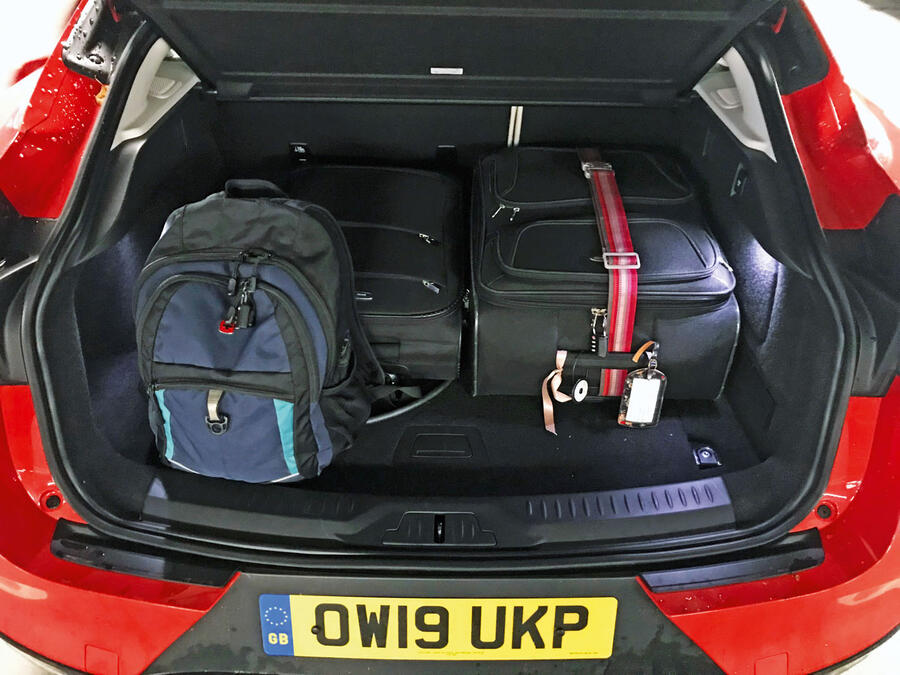
Life with a Jaguar I-Pace: Month 3
Rear window needs a wiper - 6th November 2019
I noticed a Twitter observation from a recent I-Pace purchaser to the effect that if you left your car outside in dewy conditions, you wouldn’t be able to see rearward next morning because there was no wiper. I-Pace designer Ian Callum demurred: two minutes driving would clear the rear, he said. Sorry, Ian – it’s not so easy. Not quite a design fault. Let’s just call it a foible.
Mileage: 6445
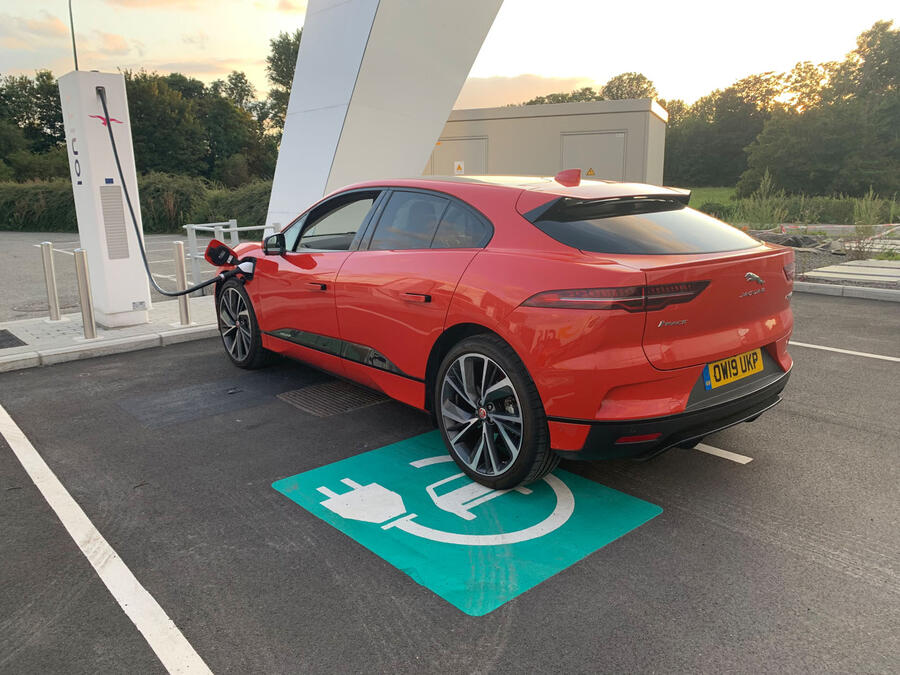
What do you do when your new and very desirable £80,000 electric car won’t lock? - 23rd October 2019
Quite a car in which to double my experience of fully electric motoring.
Following time spent with Tom Morgan’s BMW i3s, I’ve switched to Steve Cropley’s Jaguar I-Pace for a step up in size and eye-watering value. The big Jag might have been judged only third out of four in our recent electric SUV comparison, but its striking looks, smooth ride and stunning capabilities clearly make this a car to savour.
Personally, I’m not so sure about the looks. The short droop snoot looks sharp in profile, but that rear end’s crop is a little harsh. Not sure about the colour either, but the choice of orange (officially Photon Red) depends on how much you want to stand out. Then again, the car is hard to miss even without garish paint.
As Steve has written previously, you don’t forget those first few miles in Jaguar’s first all-electric car, such is the creamy force of the near-silent propulsion towards the horizon. It’s the kind of car we used to dream about for some distant future, and that it exists in the here and now is truly exciting.
But the glow quickly wore off once I got it home. The thing wouldn’t lock. Upon pressing the key fob, the I-Pace just double-bleeped back at me. The kids had just been in to have a look at what Daddy had brought home. Had they pressed something? Don’t think so. I checked the windows, the boot and bonnet, and even turned it on and off again in true IT Crowd fashion – twice. Half an hour later, now in the dark, I was still scratching my head.
Then Mrs Smith (the brains of our operation) Googled the problem. An owners’ forum popped up, and it turned out others had been through this. The solution, said one, was to open the bonnet, place your hands over where the catches are situated and slam down hard. Really? That’s not the usual way to treat a near- £80,000 new car. But it worked.
The door handles receded, the wing mirrors folded in and we breathed a sigh of relief. It hasn’t happened since, but would a German premium car need such a firm hand?
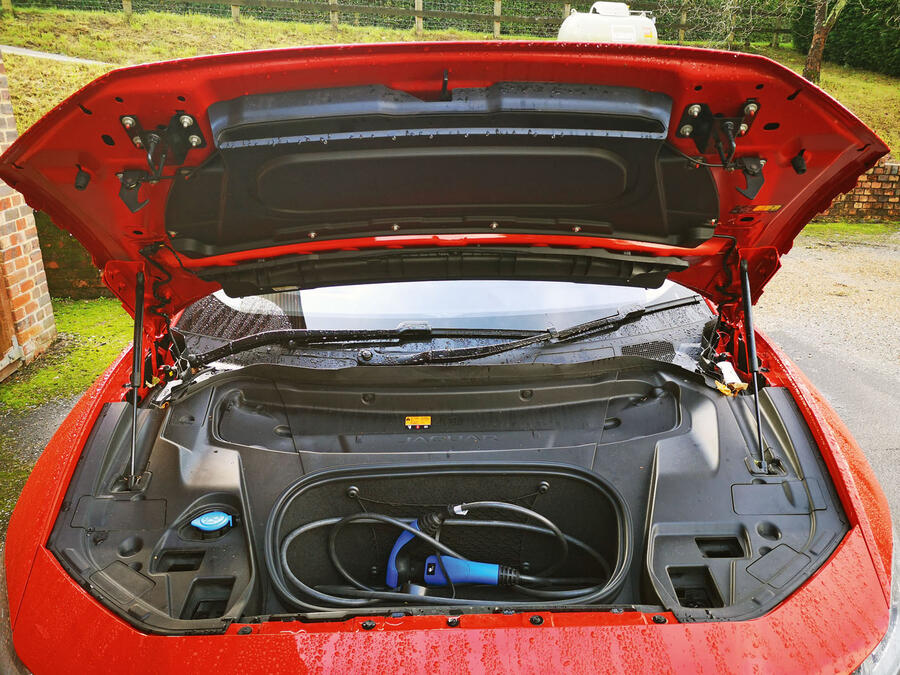
In terms of range, a full charge displays 201 miles on the dash and the 40-mile one-way commute is never going to come close to challenging that number. Although once I pull up either at work or home, it tells me the reserves have been depleted exactly by the completed mileage, every time, so I’m willing to trust its accuracy. I’m also trying to drive as ‘normally’ as possible, to see how necessary it is to adapt to an EV mentality. Pleasingly, it’s just not required for my distances – then again, I haven’t stretched it as Julian Rendell did recently from London to Frankfurt.
Judging by reader response to his story, the time and charging compromises that have to be made in such a car to complete distances beyond 200 miles are still unacceptable, especially in comparison to the same journey managed on diesel power. Hard to argue with that. It’s a serious amount of car for such a limited range, especially compared with something like the Kia e-Niro. At this price, and until the government commits to creating a charging network that matches its low-emission targets, buying an I-Pace relies heavily on ‘buying in’ to specifically what this car does offer: a genuinely special, game-changing electric driving experience.
But the kids in the back weren’t so sure. On the one and only school run we attempted – 20 minutes across country roads – they complained of car sickness, fortunately without actually redecorating the lovely interior. They said they couldn’t see out, which was probably the cause.
Those high rear lines are above a child’s eye view, even with a booster seat. In that case, Steve, you better take it back.
Damien Smith
Love it:
Plush interior The cream leather and simple but stylish fascia is a treat for every journey.
Loathe it:
Oversized wheels Those 22in alloys are a constant worry. And to these eyes, they look a little vulgar.

Mileage: 5753
Life with a Jaguar I-Pace: Month 2
Cables tidied - 25th September 2019
Emplekosyrmaphobia, or the fear of tangled wires, is not something you’ll worry about in the I-Pace. The Jag has stealthily hidden USB ports built into its expansive centre console for keeping your phone (and its cable) out of sight. Less useful is their inability to work with Android Auto or Apple CarPlay – for them you have to relegate your handset to the storage box under the armrests.
Mileage: 4469
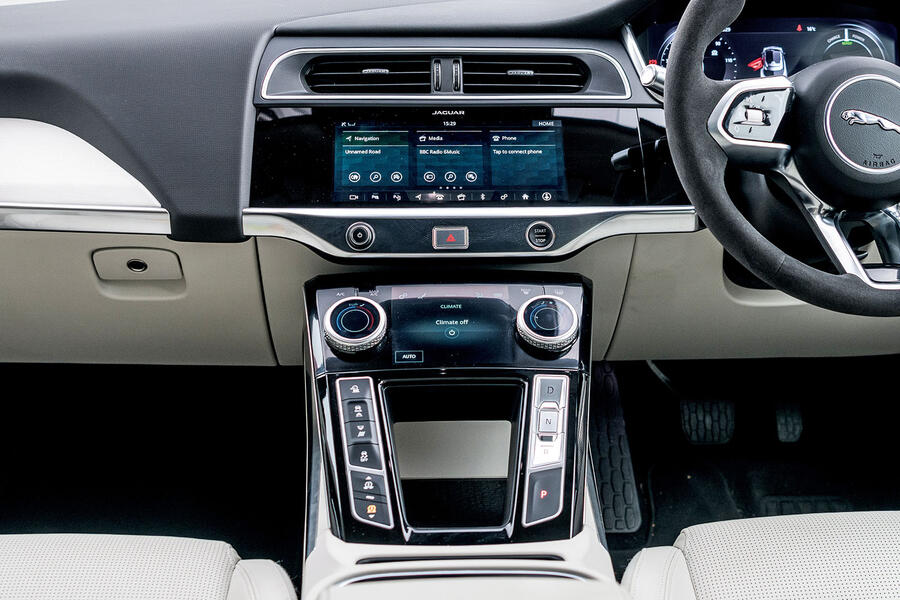
Becoming a charge-master makes EV ownership easier - 4 September 2019
I seem to have cracked the early charging glitches (operator error) but I’m battling to get anywhere near the promised 258-mile range. Using Economy and with smart ventilation working (it only cools or heats occupied seats), I can do 225- 230. But I’m learning that it hardly matters. You always want to stop by the time you’ve done 150 miles.
Mileage: 2004
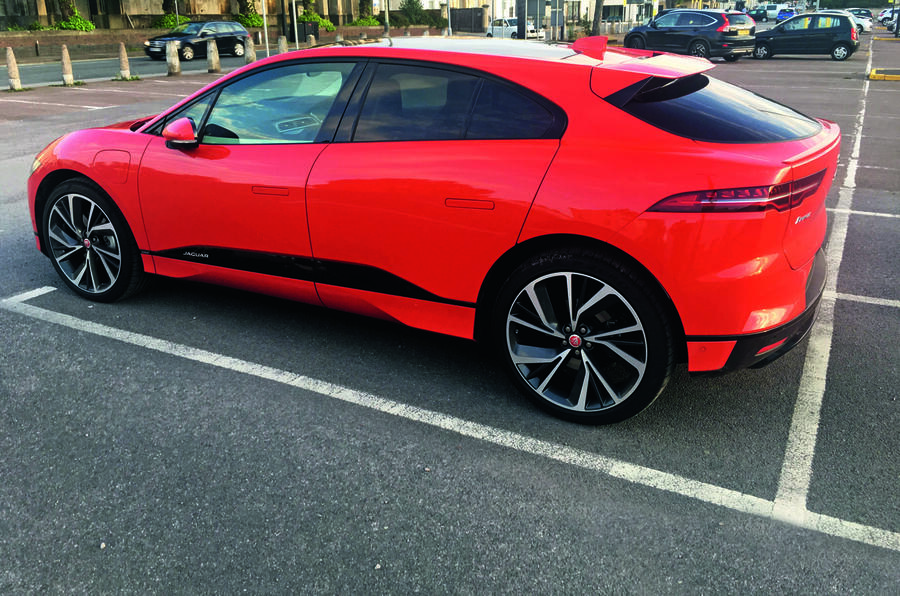
Life with a Jaguar I-Pace: Month 1
Welcoming the I-Pace to the fleet - 28th August 2019
If you ever needed proof that how a car looks is crucial to its market acceptance and ultimate success, you’d have been well and truly persuaded during our first week’s ownership of a Jaguar I-Pace 400 HSE. You might reckon the car’s pioneering all-electric propulsion system would be the major source of comment given that this is the first battery-powered Jaguar in history.
But it wasn’t. Not at all. The comment – and there was plenty of it – usually went like this… Observer: “That the new electric Jag?” Autocar: “Sure is…” Observer: “Wow, doesn’t it look great? That colour’s fantastic. Is it orange? And the wheels – are they 22-inch? They look brilliant. Must be the best-looking Jaguar ever. What’s it cost?”
No mention there of the I-Pace’s 90kWh battery pack, or its awesome capacity for 4.5sec, smooth and silent sprints from standstill to 60mph (delivered with zero wheelspin because all wheels are driven). No mention of a predicted range that seems to vary between 220 and 260 miles. And only secondary attention to the price – which starts at £71,495 for a standard 400 HSE after the £3500 government incentive, but totals £79,740 in our case because of the mighty raft of options carried.
Everything is secondary, in those early minutes, to the car’s sleek, unique outline, to how well it wears its £700 Photon Red paint (which in decent sunlight is a tasteful Nearly Orange) and how well it rolls on its 22in five-split-spoke wheels.
If you value the joy of driving extra-refined cars, as I do, you’ll find there’s nothing in your memory bank quite like those first few miles in the I-Pace, as it demonstrates its near-silence and total smoothness. There’s a faraway whine as you accelerate, but the car’s ability to gain speed without noise or vibration simply doesn’t compute. It even shades other electric cars. After a few journeys, this consolidates into a kind of gliding gait that is simply intoxicating. Ridiculous to introduce noise into this, even if you could. And hard to imagine that, just a couple of years ago, many of us feared that electric cars would never have the ability to exhilarate a driver.
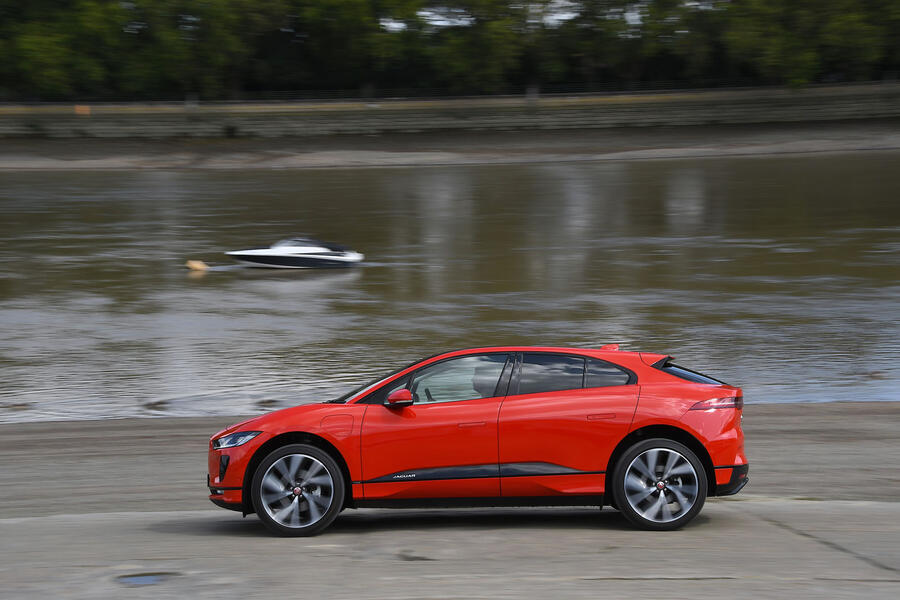
Of course, the wheels are in touch with the road in a conventional way. This car has a flat but sporty ride. But great trouble has clearly been taken to control road noise (in a way other electric cars do not) and the wind noise is also low. The ride is conventional in a sense but, as you ride, you soon tune into the fact that this machine has a long wheelbase with smaller than usual overhangs, that the major mass is beneath the floor, that there simply isn’t a great big metal lump suspended on rubber over the front wheels and that because of all this, the self-levelling air suspension units have a comparatively easy time keeping things on an even keel.
This and the I-Pace’s sophisticated torque-vectoring system – the ability to send different amounts of torque to different wheels as the car manoeuvres – means the car stays in line at road speeds whatever you do, gripping hard and responding near-instantly to practically any input.
On the subjects of charging and range, we’re still acquiring knowledge. The maker claims a 258-mile WLTP combined (read ‘realistic’) range, but we’ve had trouble reaching that without preconditioning – a heating process you can put the car through while it’s still charging. But plug the car in overnight at this part of the year and without preconditioning you’ll be offered 210-215 miles, a figure the I-Pace will faithfully fulfil if you cruise at 70mph on motorways and remember to let downslopes regenerate your battery.
In our experience, it takes good management and careful driving to get anywhere near an honest 258 miles. But the Economy setting, the softest of three driving modes, works much better than most by adding eight to 10 miles to the total range while maintaining decent accelerator response and cruising capability.
At charging time, we’ve so far had a bit of trouble. The car has never refused outright to take charge, but we’ve had unsuccessful attempts after which we’ve simply had to start again. Other users report the same.
The way to make it work seems to be to ensure your I-Pace is in Park, power off, with the (automatic) handbrake on and with the tailgate securely closed. You need to plug your cable first into the power source, and then into the car (the handbook makes that point very firmly). Usually there’ll be a loud click and the dashboard will show an amber ‘CHARGING’ message, whereupon you can be confident of locking the car and walking away with the battery capacity growing. The 7kW charger in my own garage is enough to keep a car like this healthy, provided it has an evening to recover from a long trip.
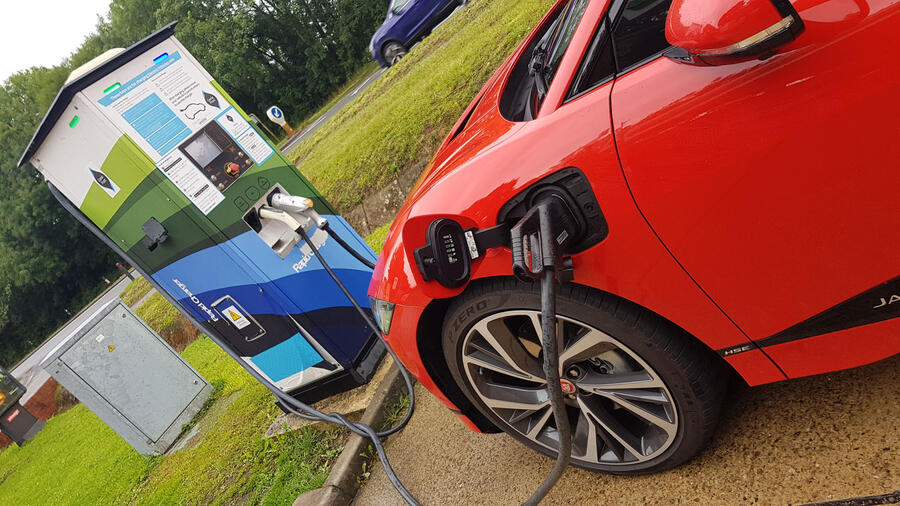
Key impressions so far? This is a superb car, especially this latest example that improves in quality detail on the early models Jaguar rushed into service. The driving position – around which former Jaguar designer Ian Callum said the car has been designed – is wonderful. Full marks for the seats, too, and the amazing performance.
On range and connectivity, we’re happy without being ecstatic. Hookup uncertainties do play on your mind and, having got used to the 300-mile ranges of much cheaper Hyundais and Kias, the 220-250 mile range of this car is just okay. Recent chats with manufacturers bidding to launch electric cars make it pretty clear 300 miles is the figure that makes people feel safe.
We’ll get used to all this. We will learn the I-Pace’s charging quirks and soon see that 220 miles is plenty. There is a learning curve, and we’re on it. But in itself, from stem to stern, the electric Jaguar is brilliant. Living with it looks set to be a delight.
Second Opinion
I didn’t instantly warm to the I-Pace. The big centre console seemed contrary to the space-creating possibilities of an EV layout; the twin touchscreen controls a bit confused. Then I drove it. The I-Pace has a real sense of quiet, opulent luxury. It feels special. Like a Jaguar should.
James Attwood
Jaguar I-Pace 400 HSE prices and specification
Prices: List price new £71,495 (after £3500 government grant) List price now £71,495 (after £3500 government grant) Price as tested £79,740 Dealer value now £75,000 Private value now £70,000 Trade value now £70,000 (part exchange)
Options:Photon Red paint £700, monogram trim finisher £250, suedecloth headlining £900, suedecloth steering wheel £600, 22in five-spoke alloy wheels £500, electronic air suspension £1100, panoramic roof £960, activity key £300, heated/ cooled performance front seats plus heated rear seats £1400, head-up display £900, privacy glass £375, exterior black pack £260
Fuel consumption and range: WLTP range 258 miles Battery capacity 90kWh Test range 250 miles (summer), 230 miles (winter)
Tech highlights: 0-62mph 4.5sec Top speed 124mph Motor twin permanent magnet electric Max power 394bhp Max torque 513lb ft Transmission single-speed direct drive Boot capacity 577-1453 litres Wheels 8.5Jx22in, alloy Tyres 255/40 R22 Kerb weight 2200kg
Service and running costs: Contract hire rate £550 CO2 0g/km Service costs none Other costs none Electricity costs £335 Running costs inc electricity £335 Cost per mile 3.6 pence Depreciation £1495 Cost per mile inc dep’n 19 pence Faults Locking problem

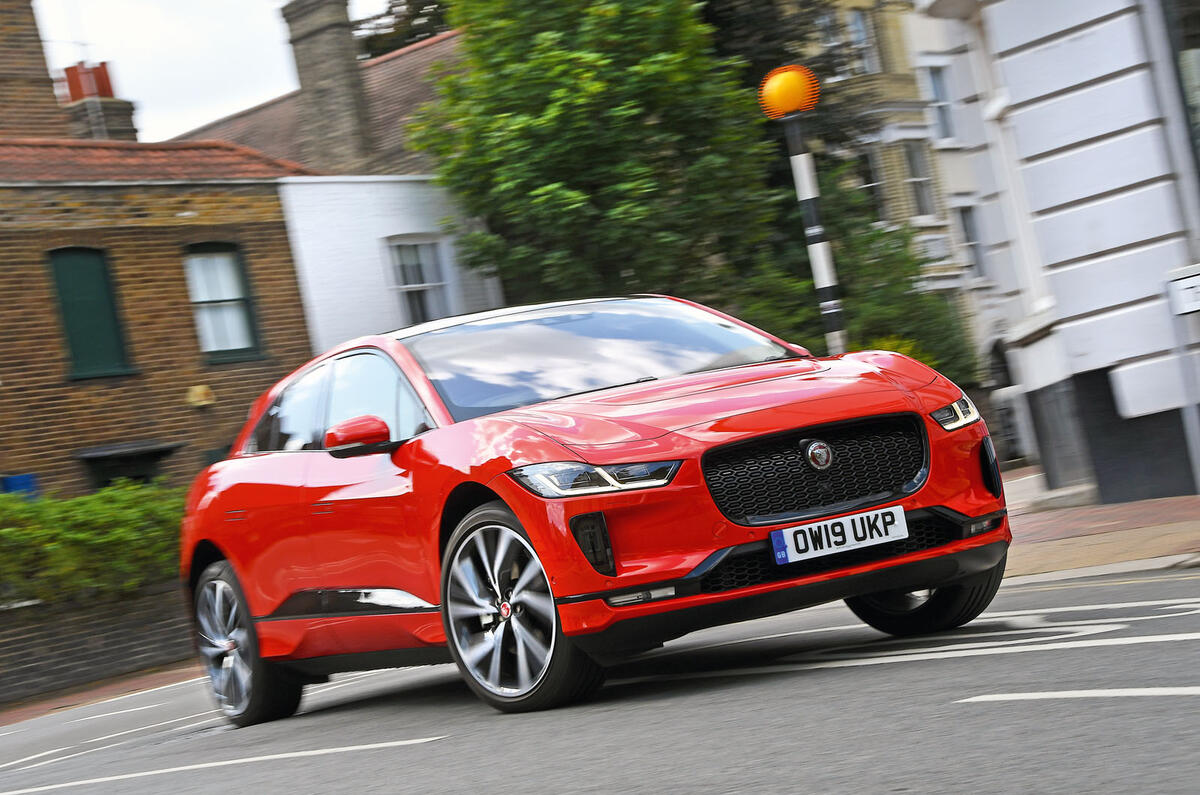
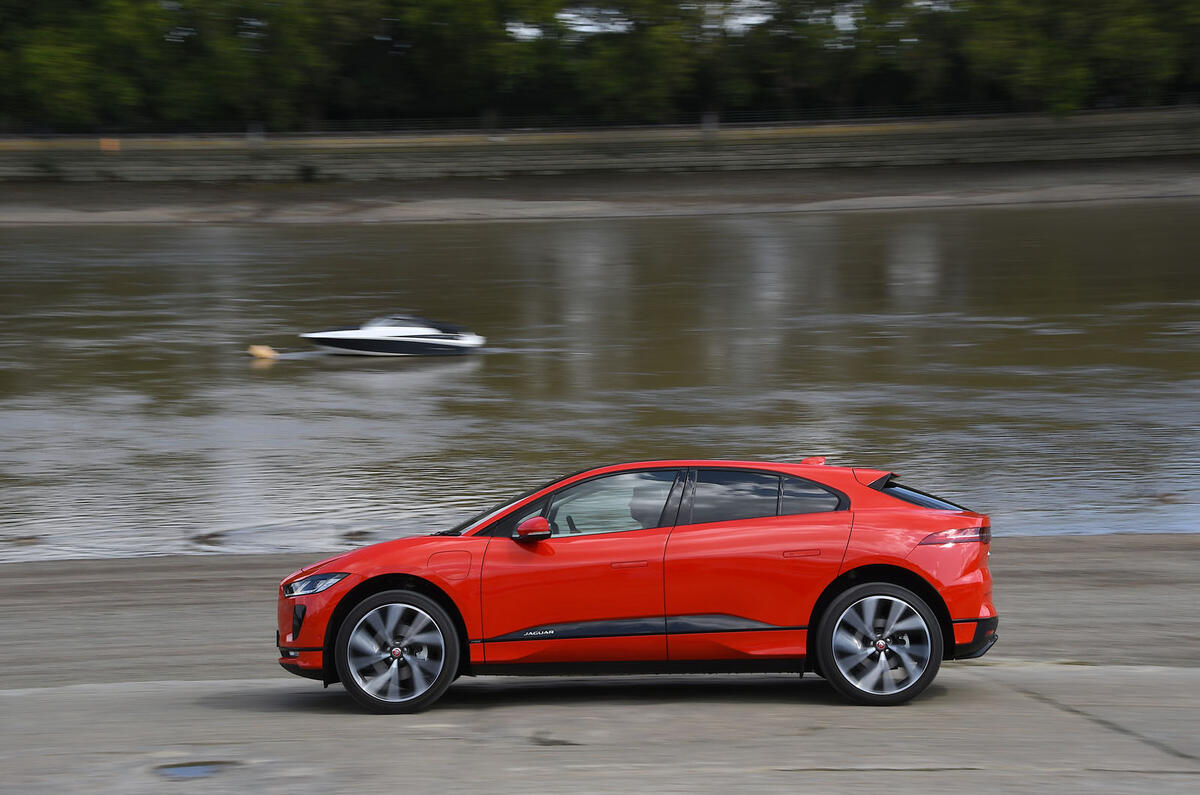
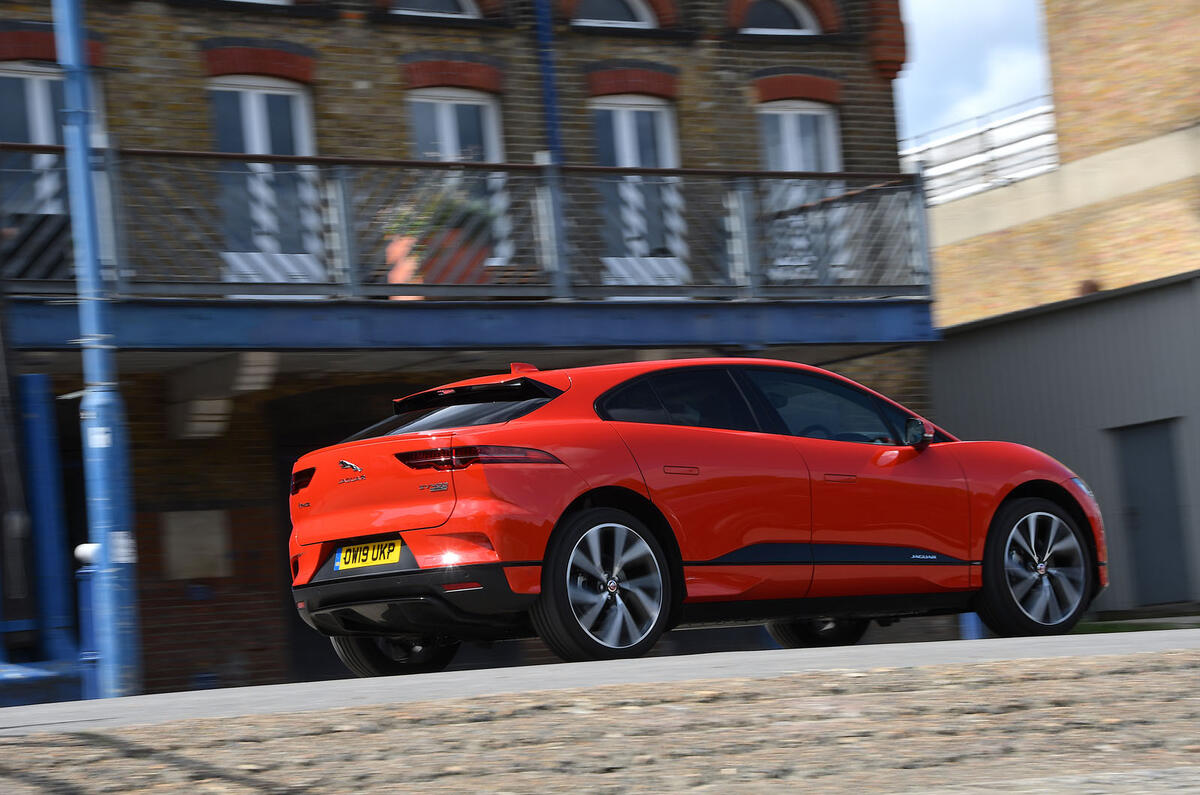
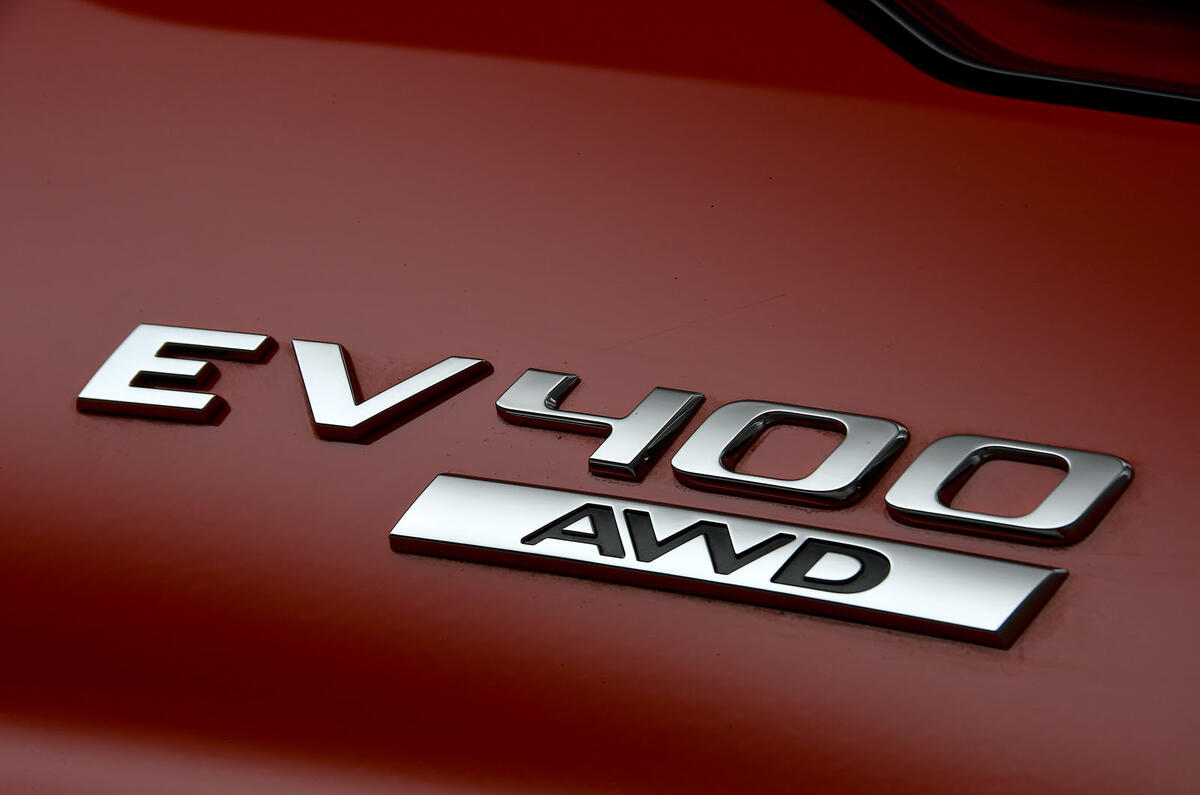
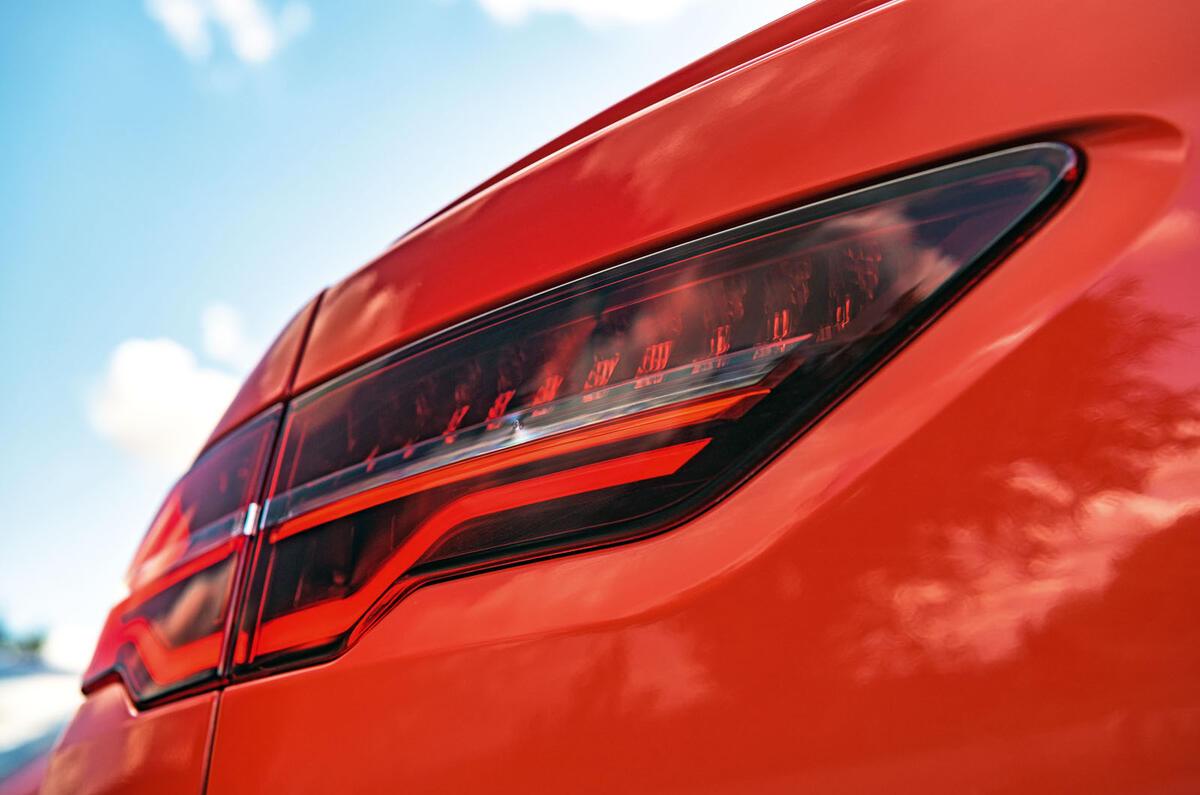
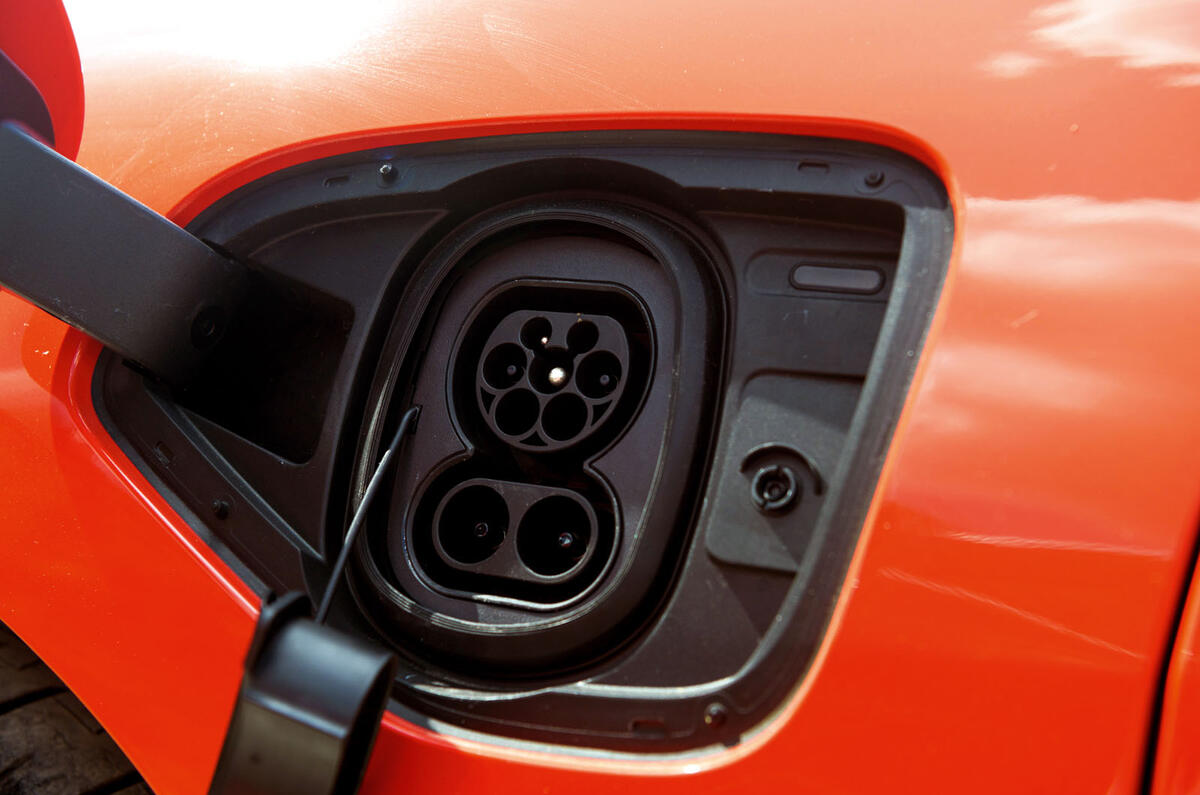
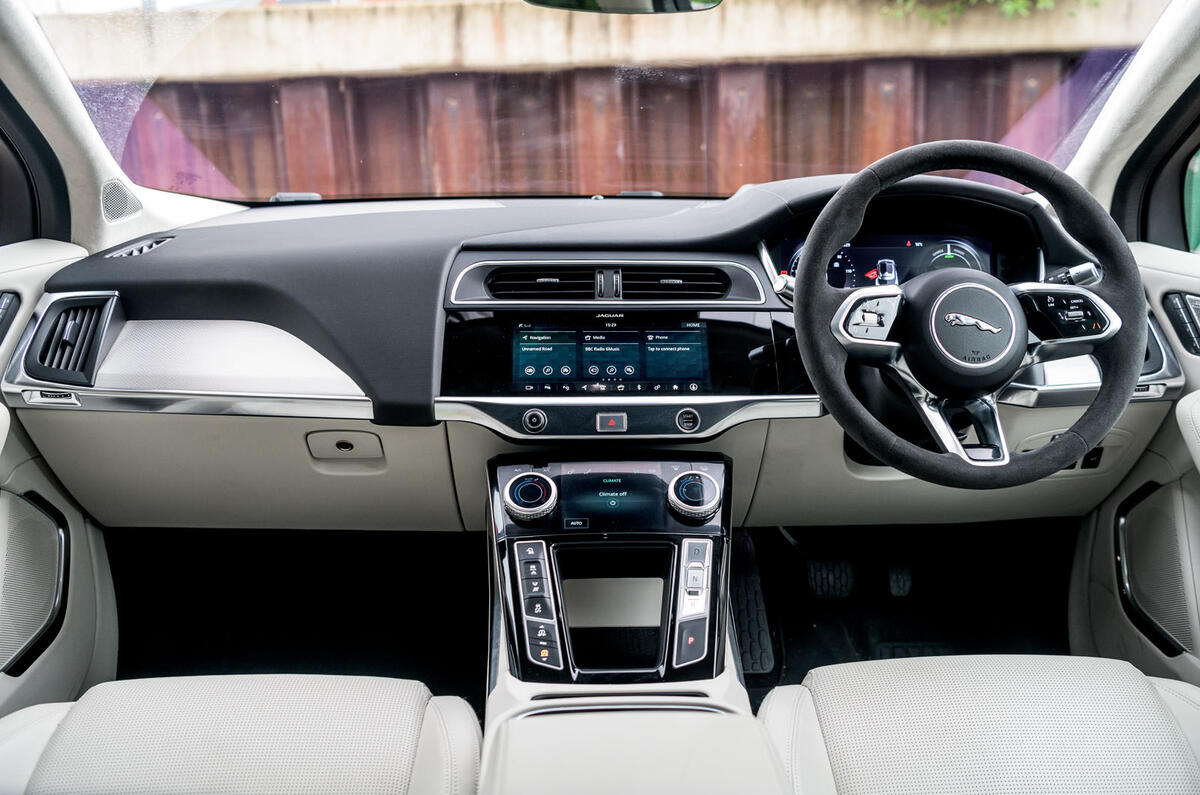
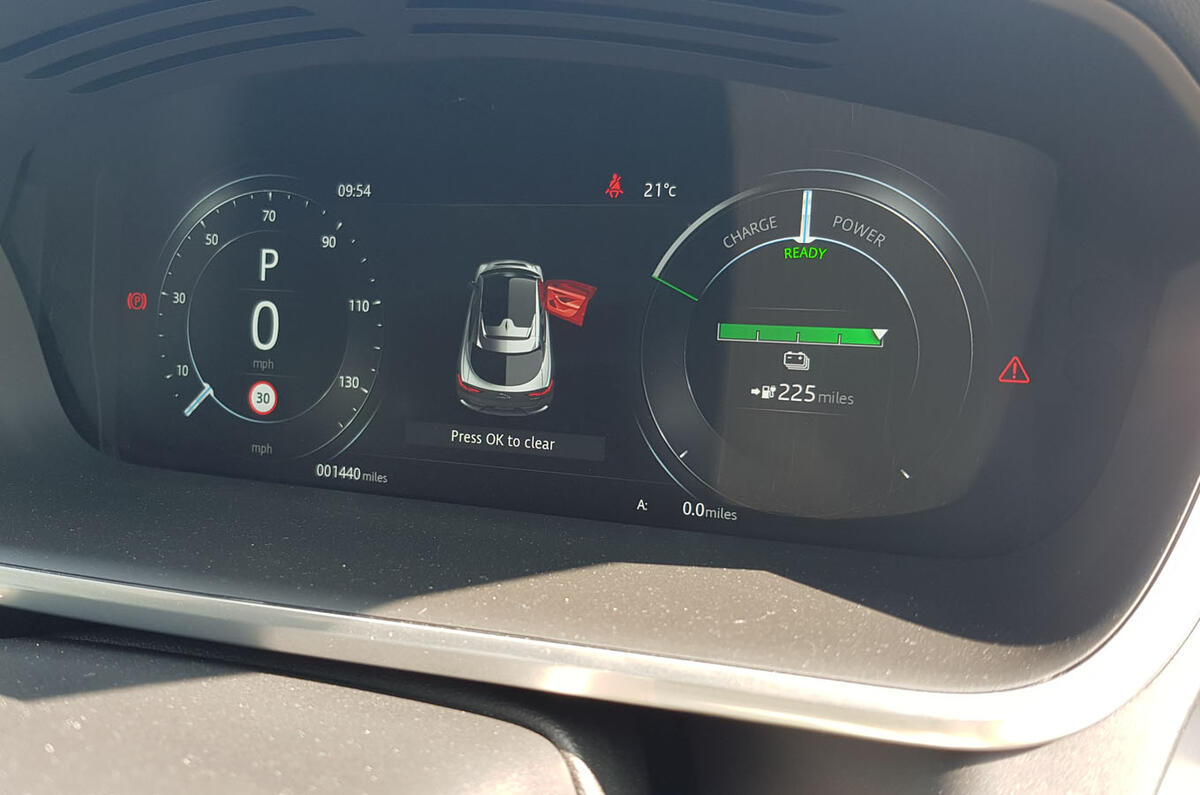
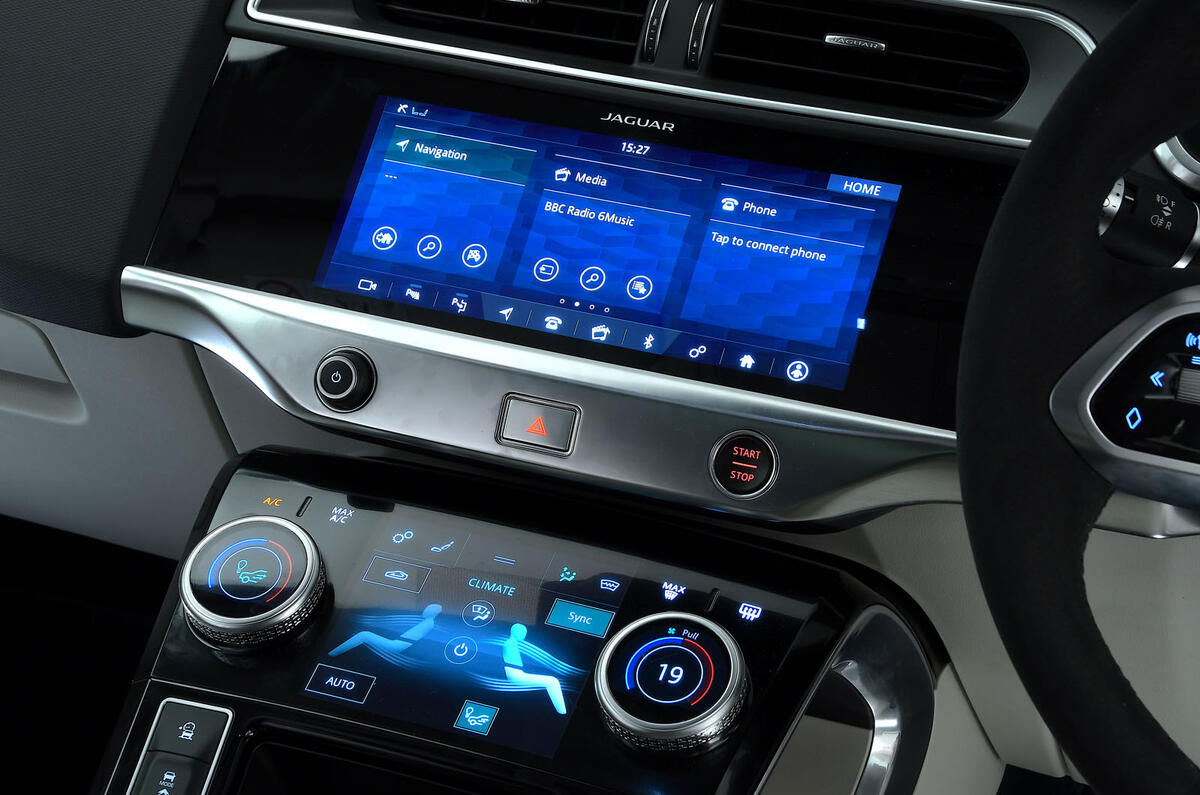


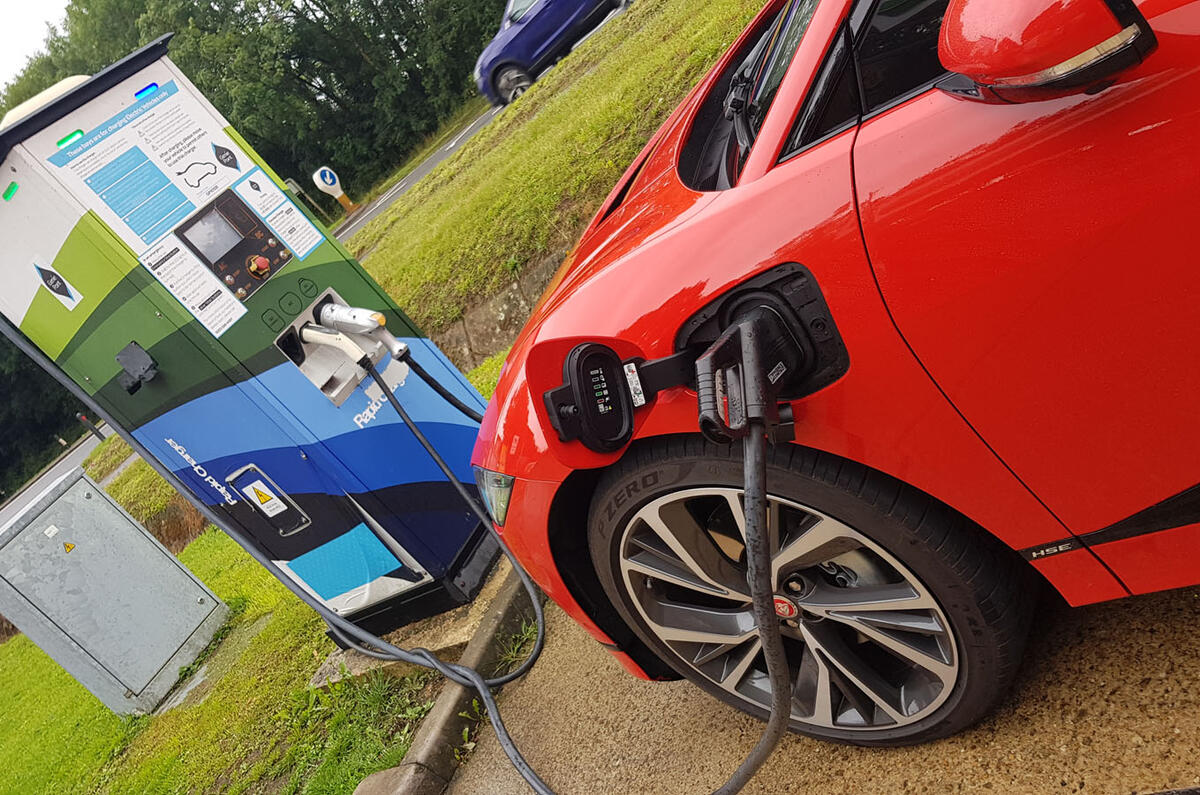
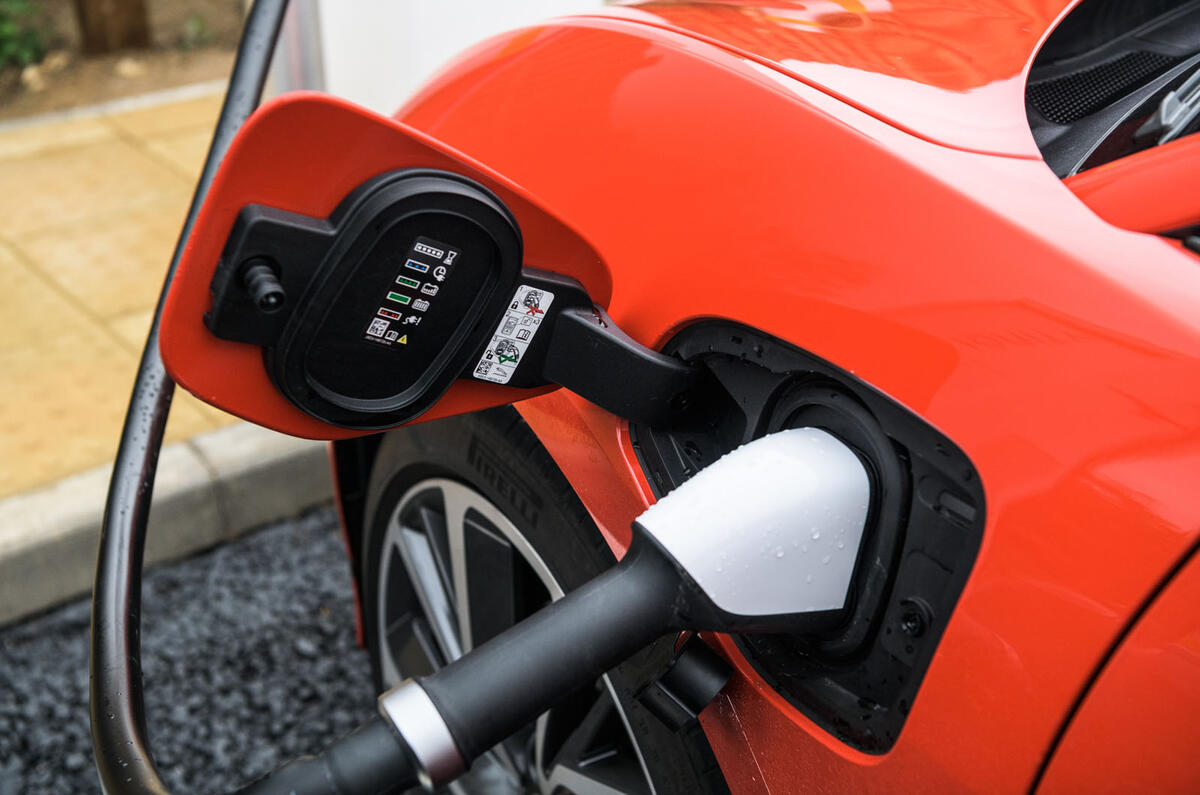
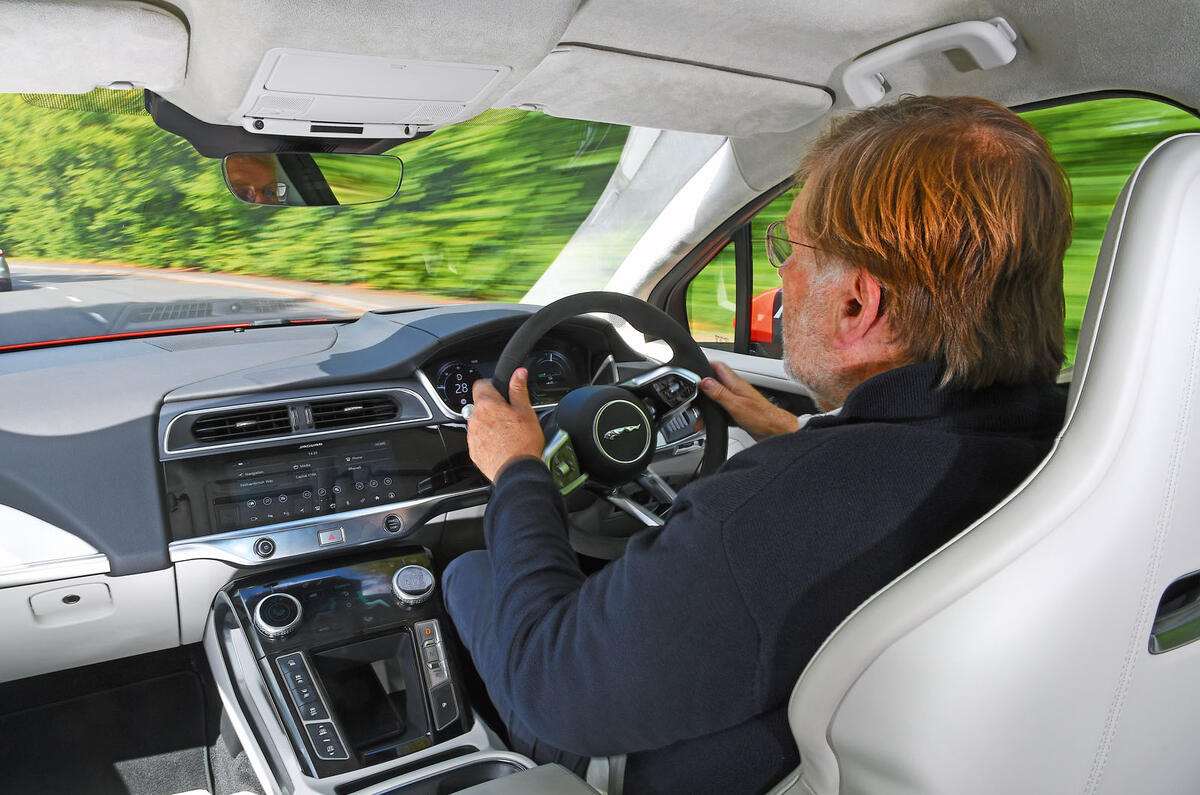
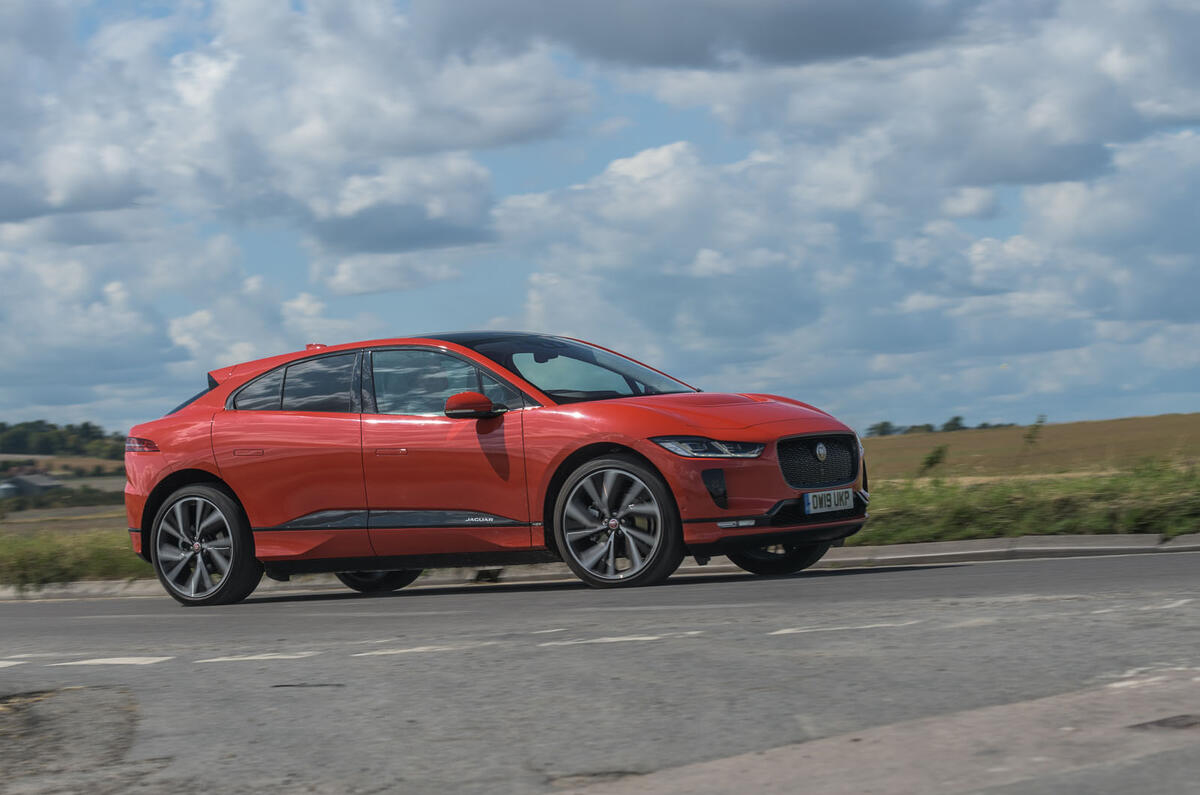
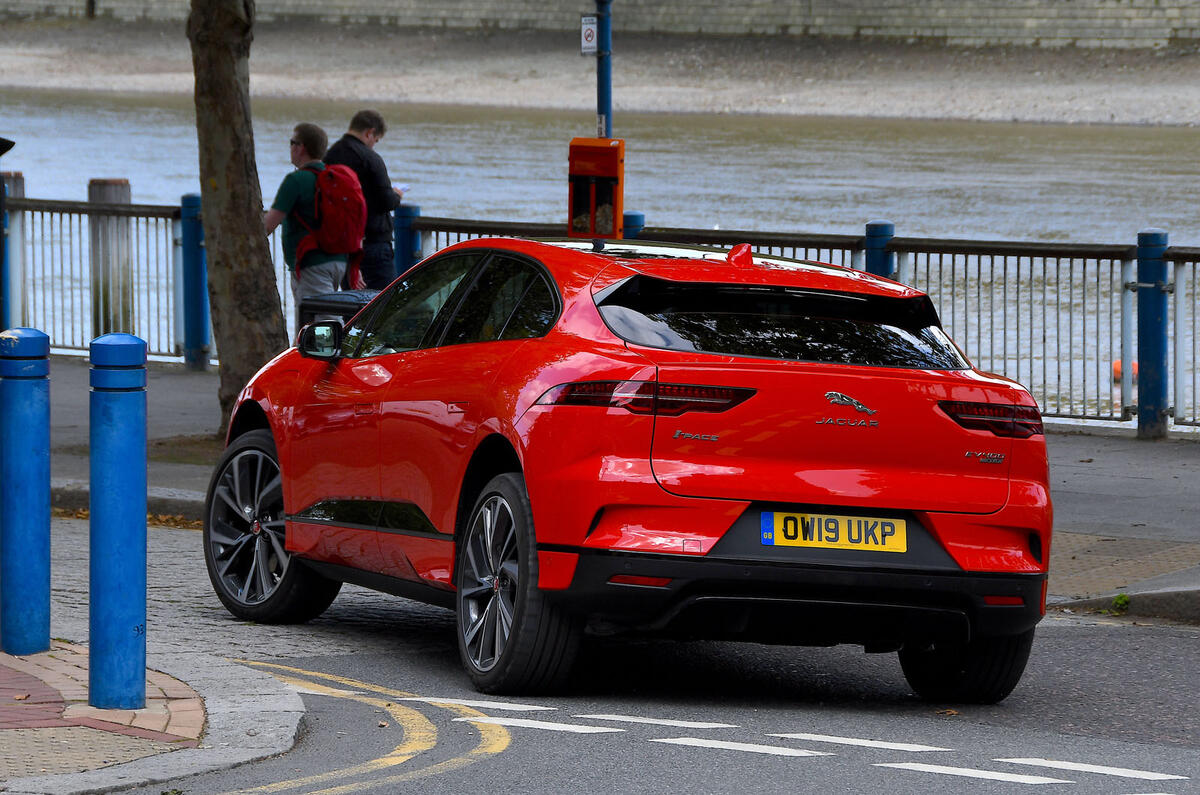
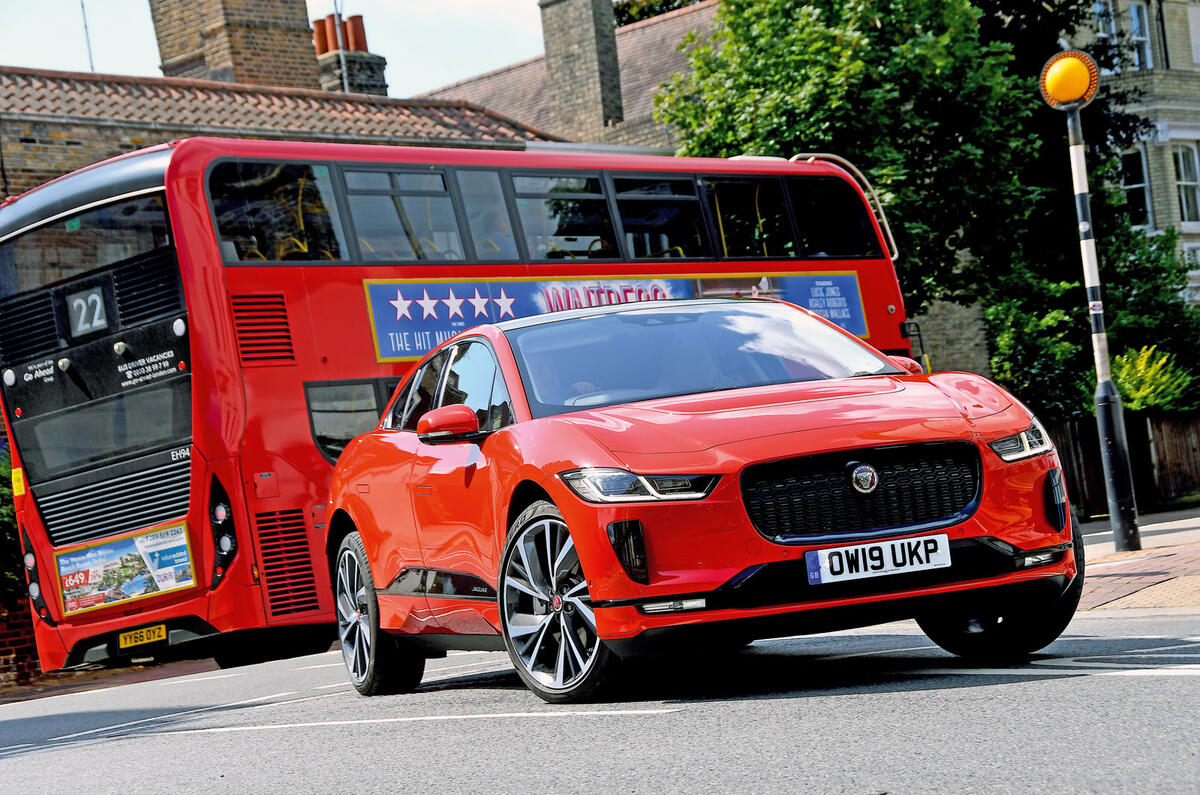
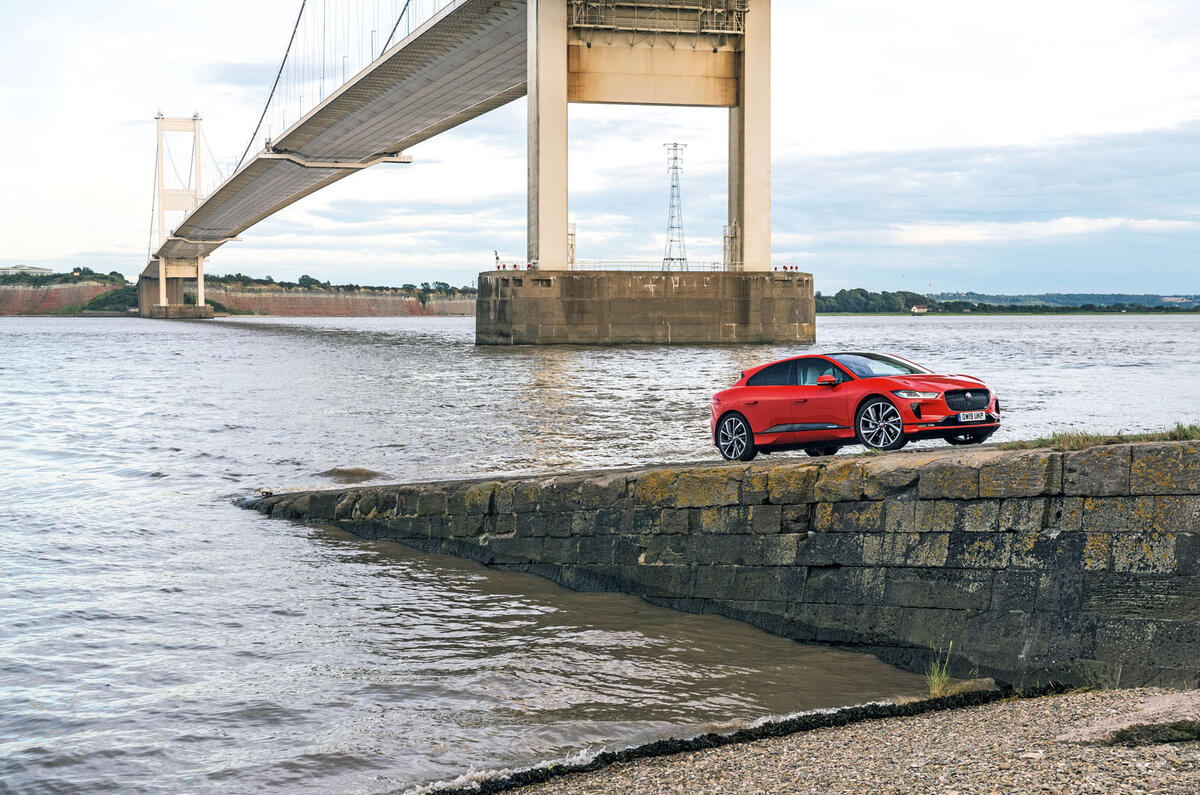
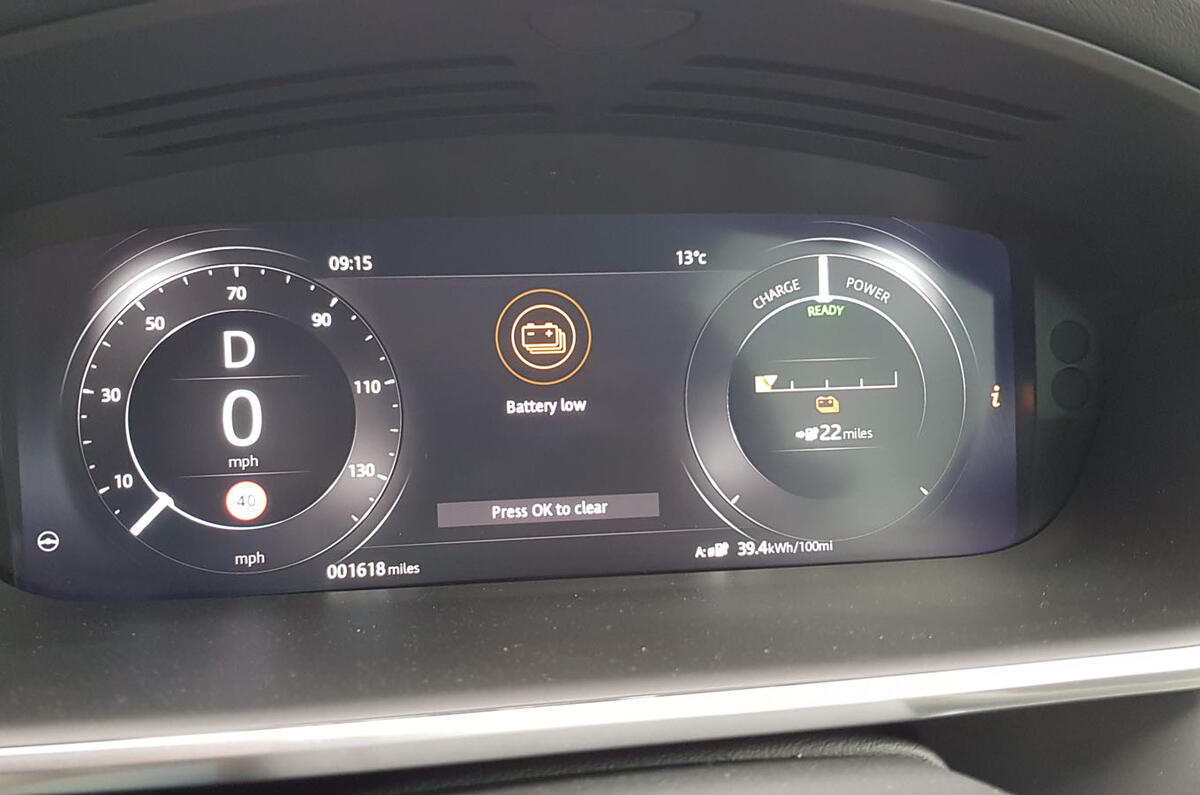
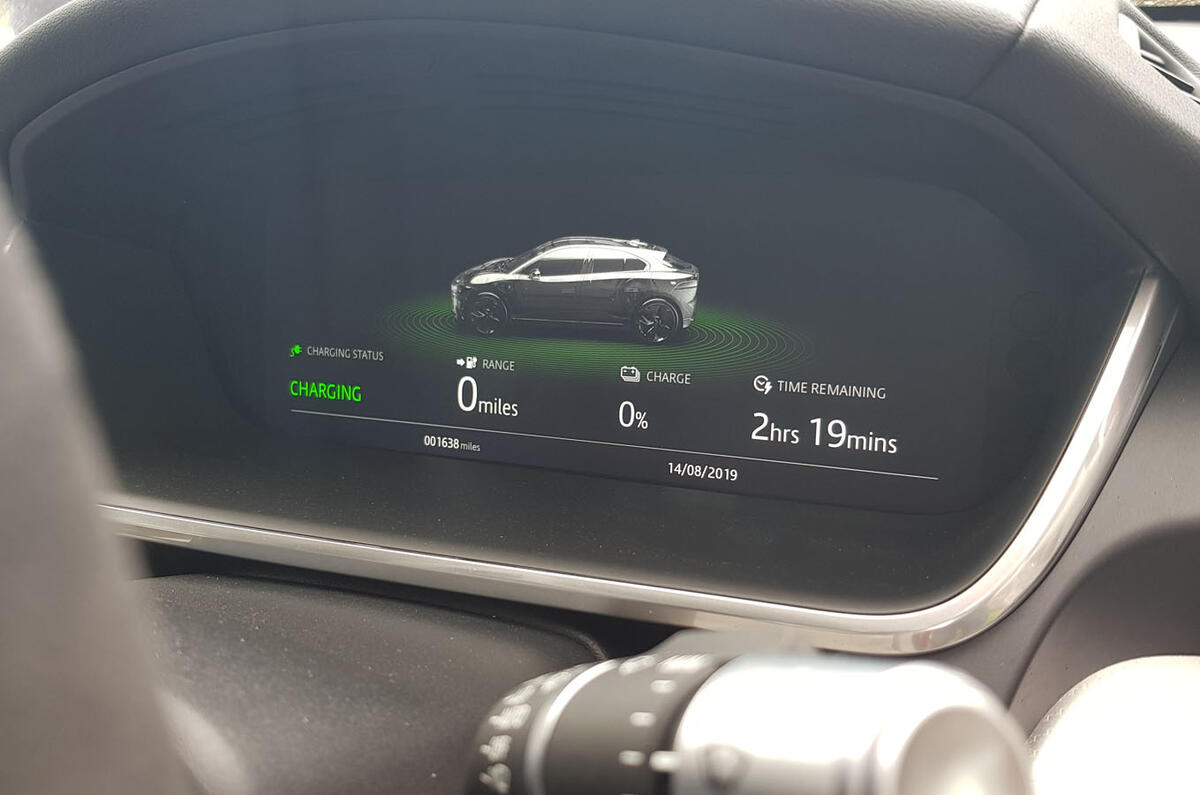
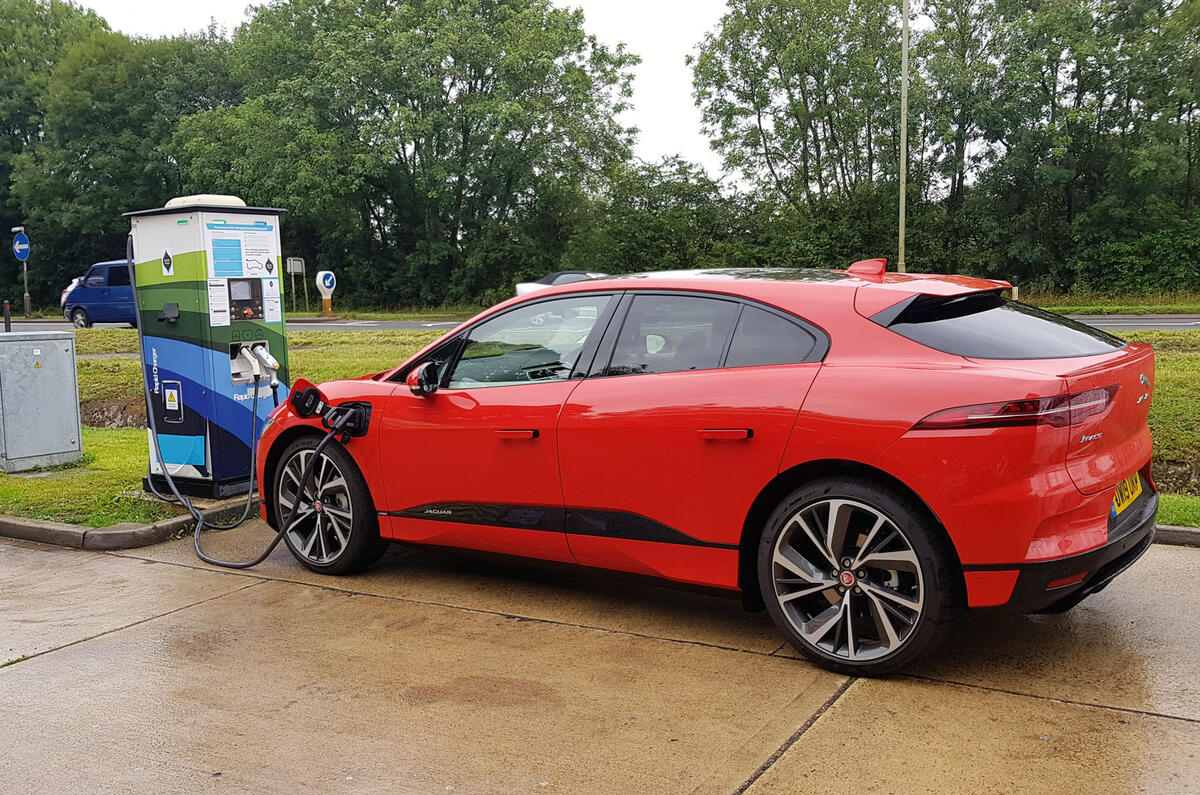
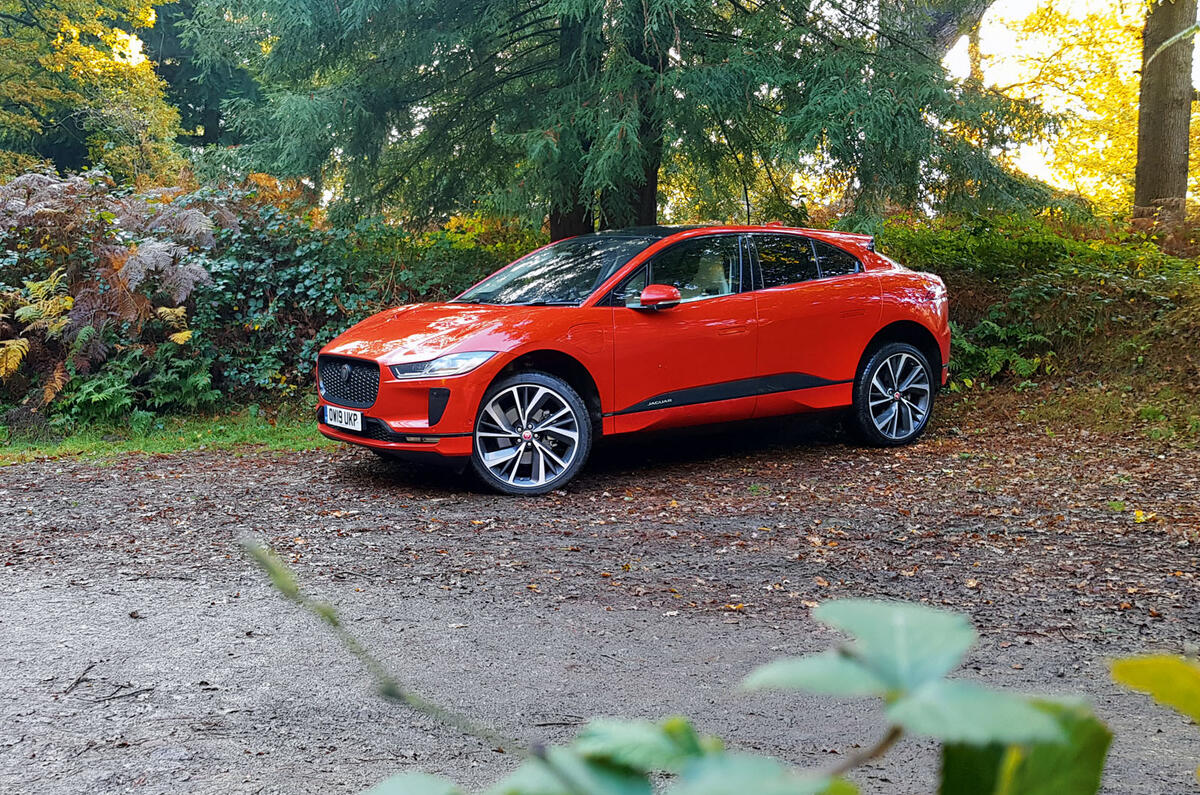
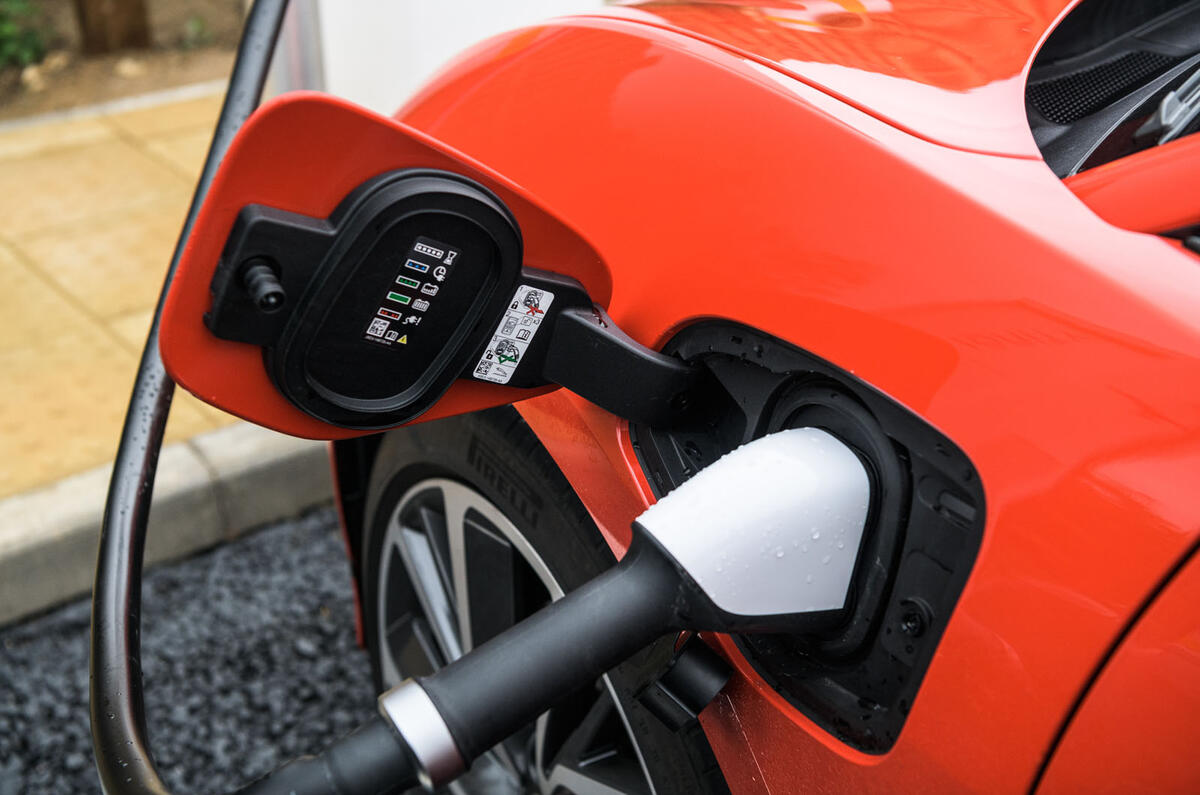
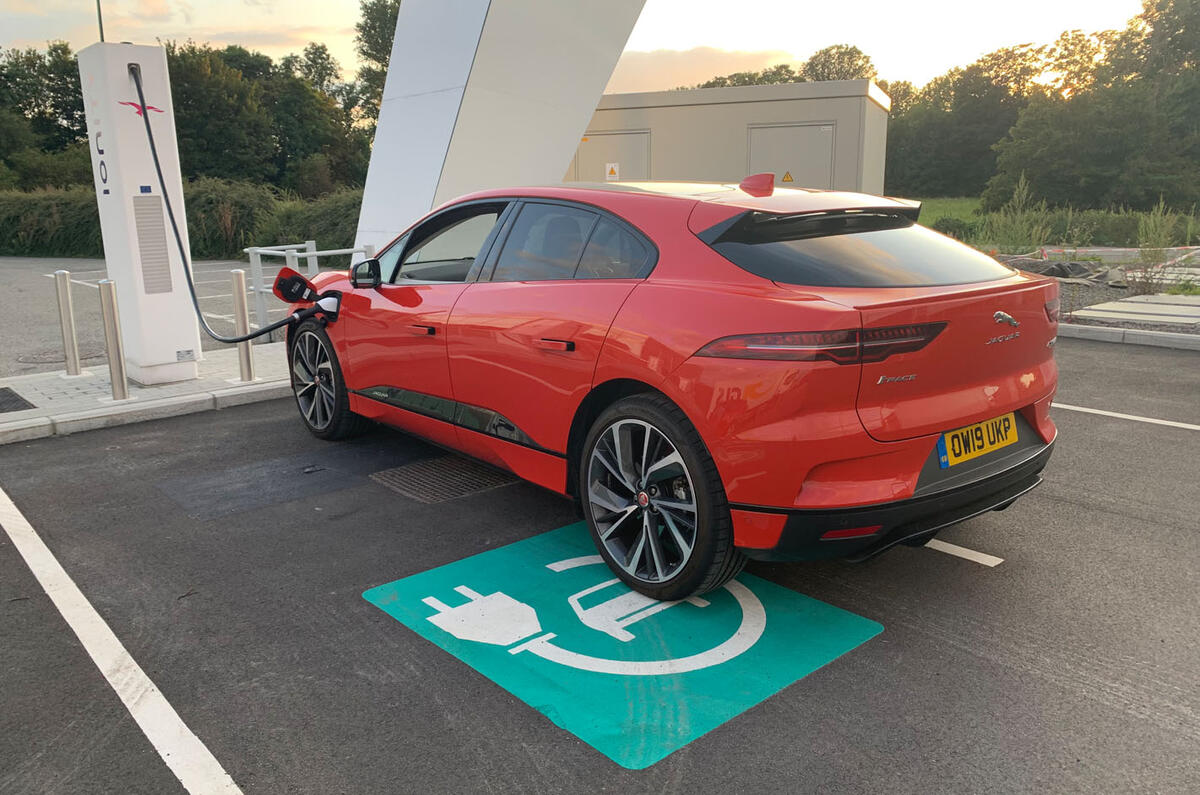

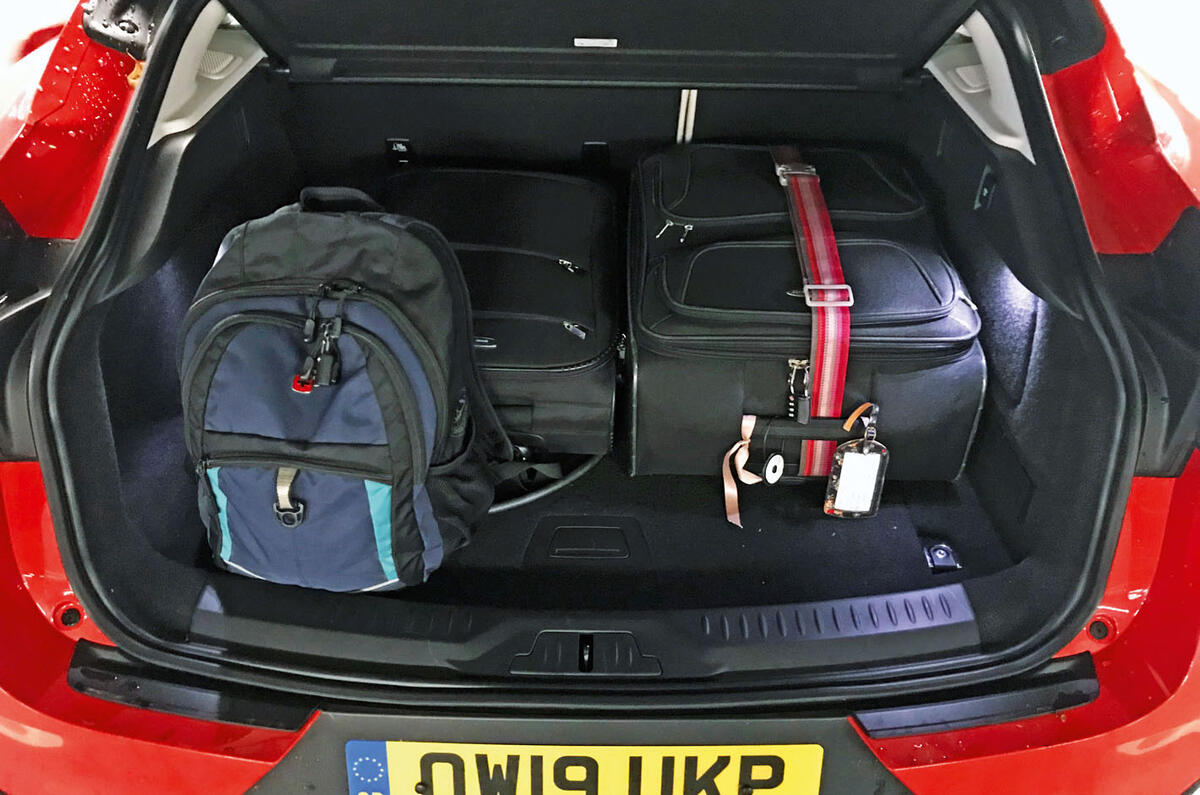
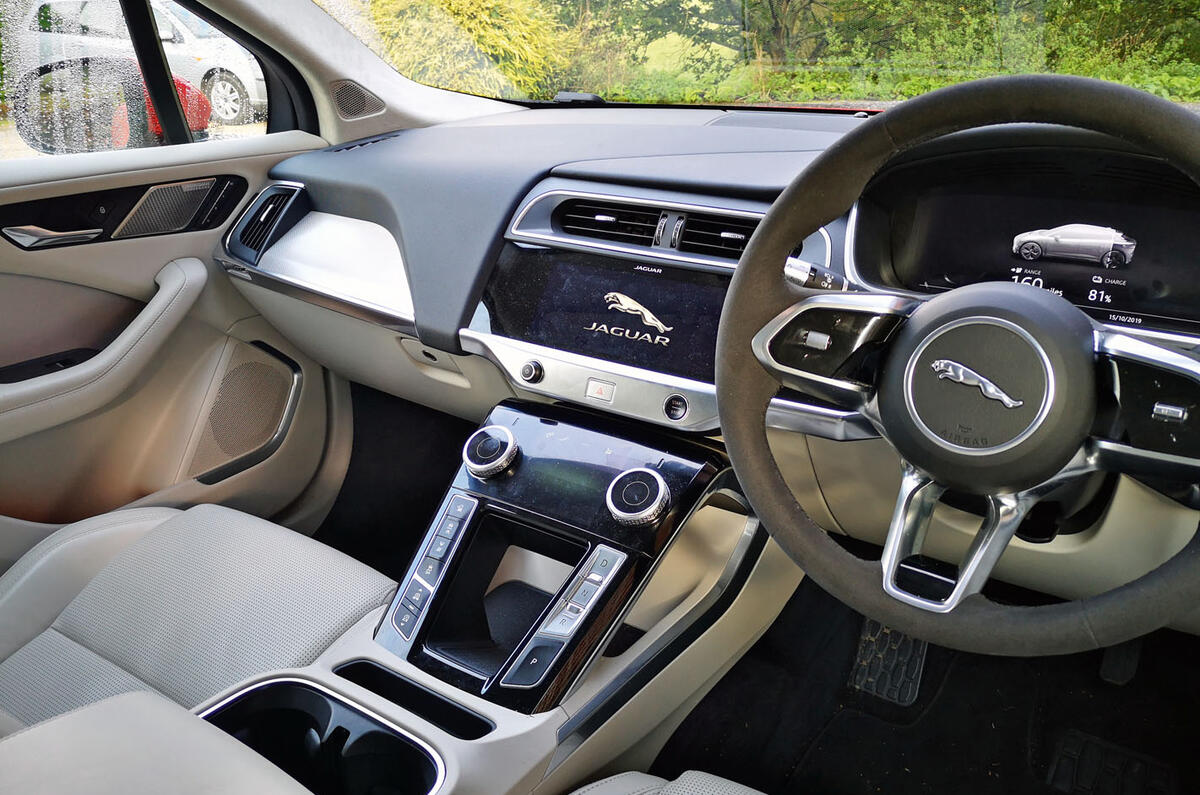
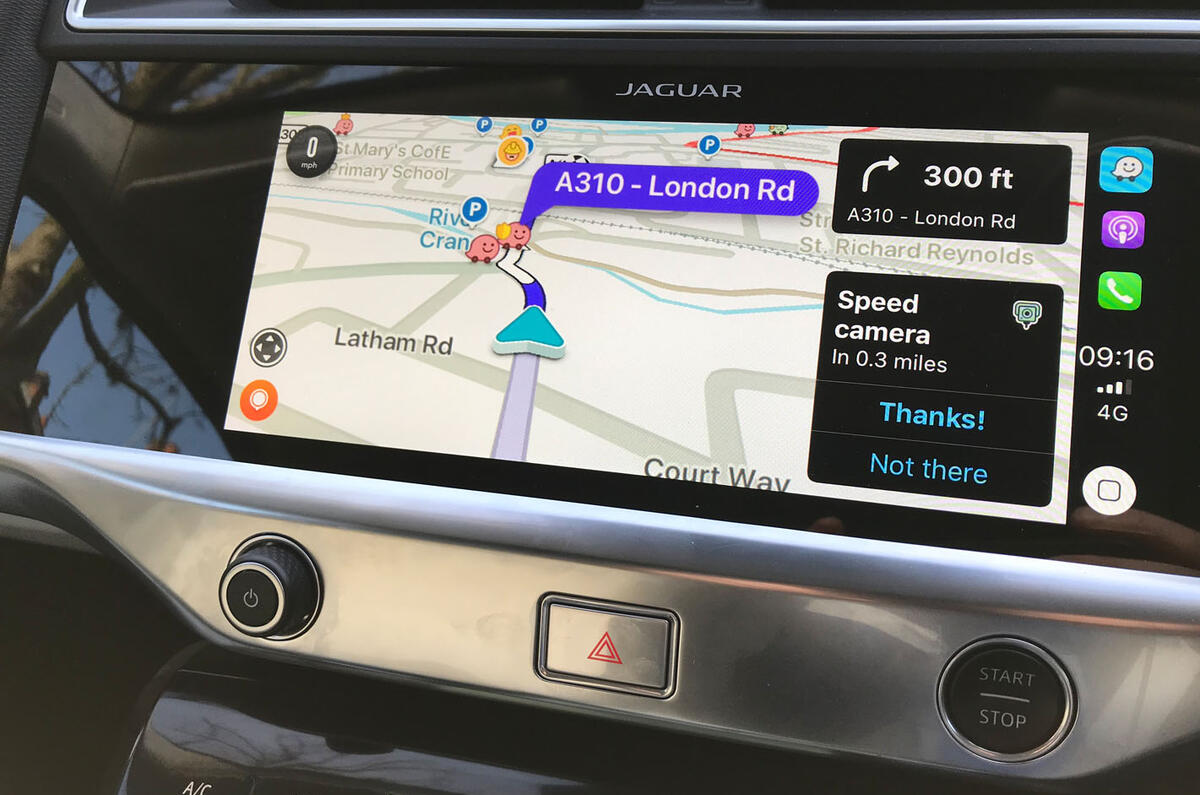
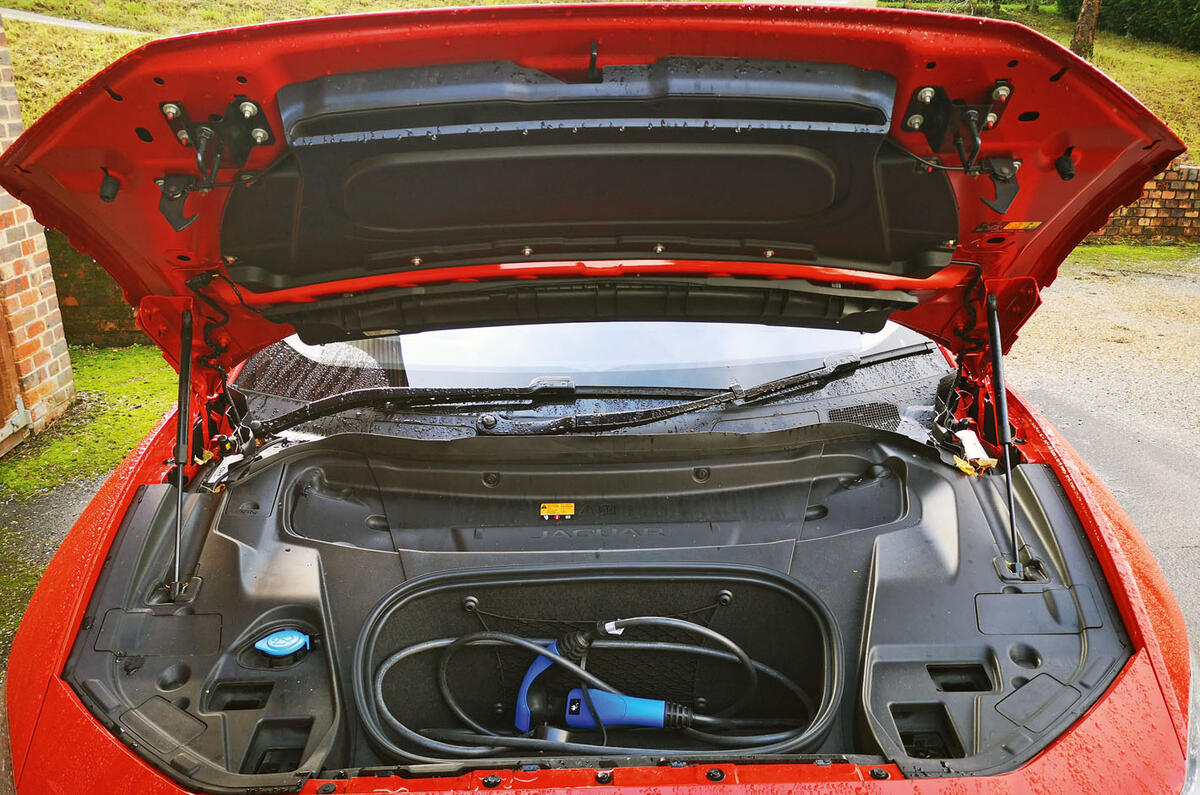
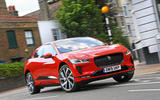

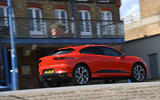
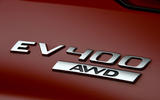
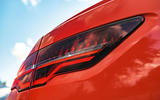
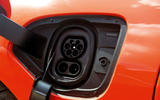
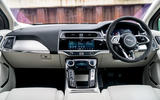

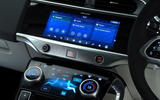
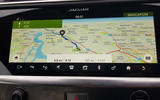
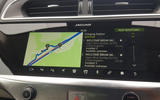
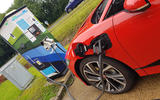

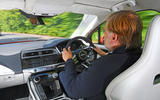
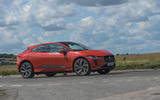
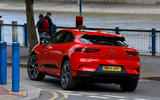
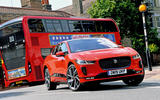
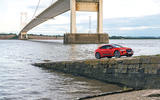
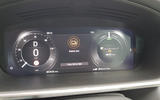
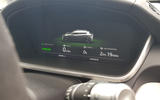
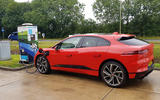
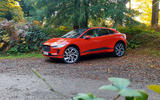
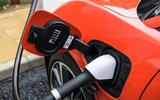
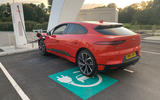
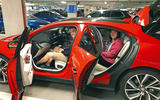
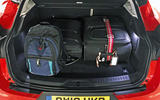

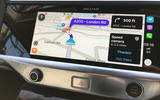
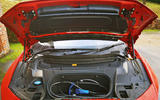


Join the debate
Add your comment
220 -250 miles my arse
220 -250 miles my arse
210 at best driven normally.
My wifes model 3 performance walks all over this thing in range, driving dynamics charging network, blah blah blah
Also didn't realize it was over 75 I
What a joke
Keep bigging it up autocrat.
Remember who pays your bills...
Life with an I-Pace
Great to see the positive comments from actual owners and can’t wait to take delivery of my I-Pace next month. I am sure sales of the I-pace and other EV vehicles will accelerate once more buyers become aware of the nil BIK liability from April next year! It certainly helped to shift my anxiety about the driving range. Although one charge a week will probably be sufficient for my eight mile daily commute and total of 200 miles most weeks. The list price of the I-Pace and other EV’s vehicle is scary, but who buys their cars nowadays? The stronger predicted residual values now means that leasing costs for EV’s are far more affordable than they use to be.
I have one
The software is a bit glitchy but doesn't affect the way it drives - which is great! Did 360 miles in a day the other week - stopped for lunch on way there, and for evening meal on way back, Ionity charger at Gretna Green did the biz (if only Ecotricity were as reliable, yeah, right) so entirely normal travel time (though that's with three females in the car who need the loo more than me!). Total electricity cost was around £20. Having around 200 miles range is lifechanging compared to the i3 I had before (60ah rex) and I only charge a couple of times a week - at home overnight - and so only very rarely visit a petrol station. Much rather an iPace than Tesla (who wanted minimum of £95k for an X when I was ordering the iPace - and whose owners are largely v irritating with their superiority complex), Merc EQC or Audi etron